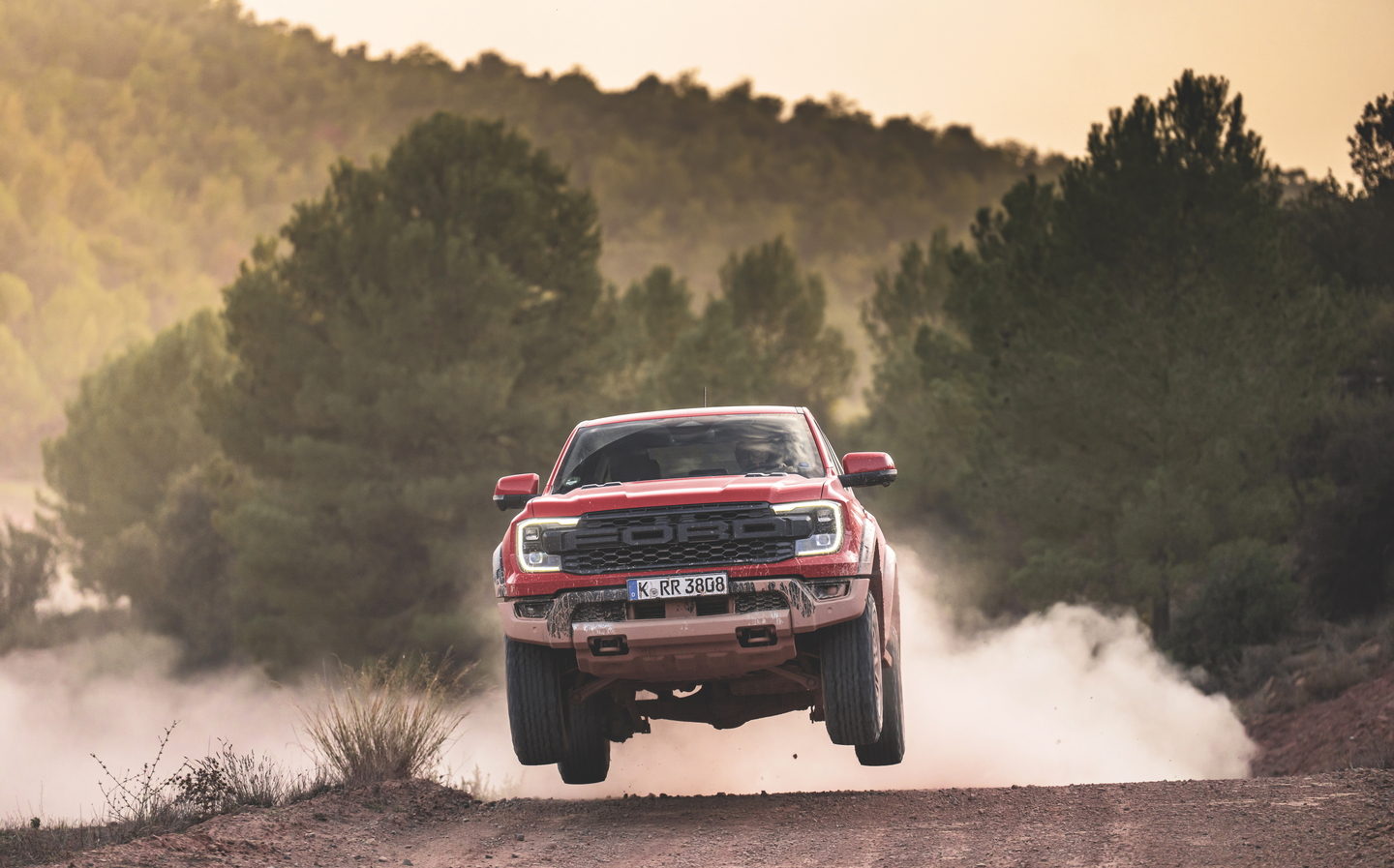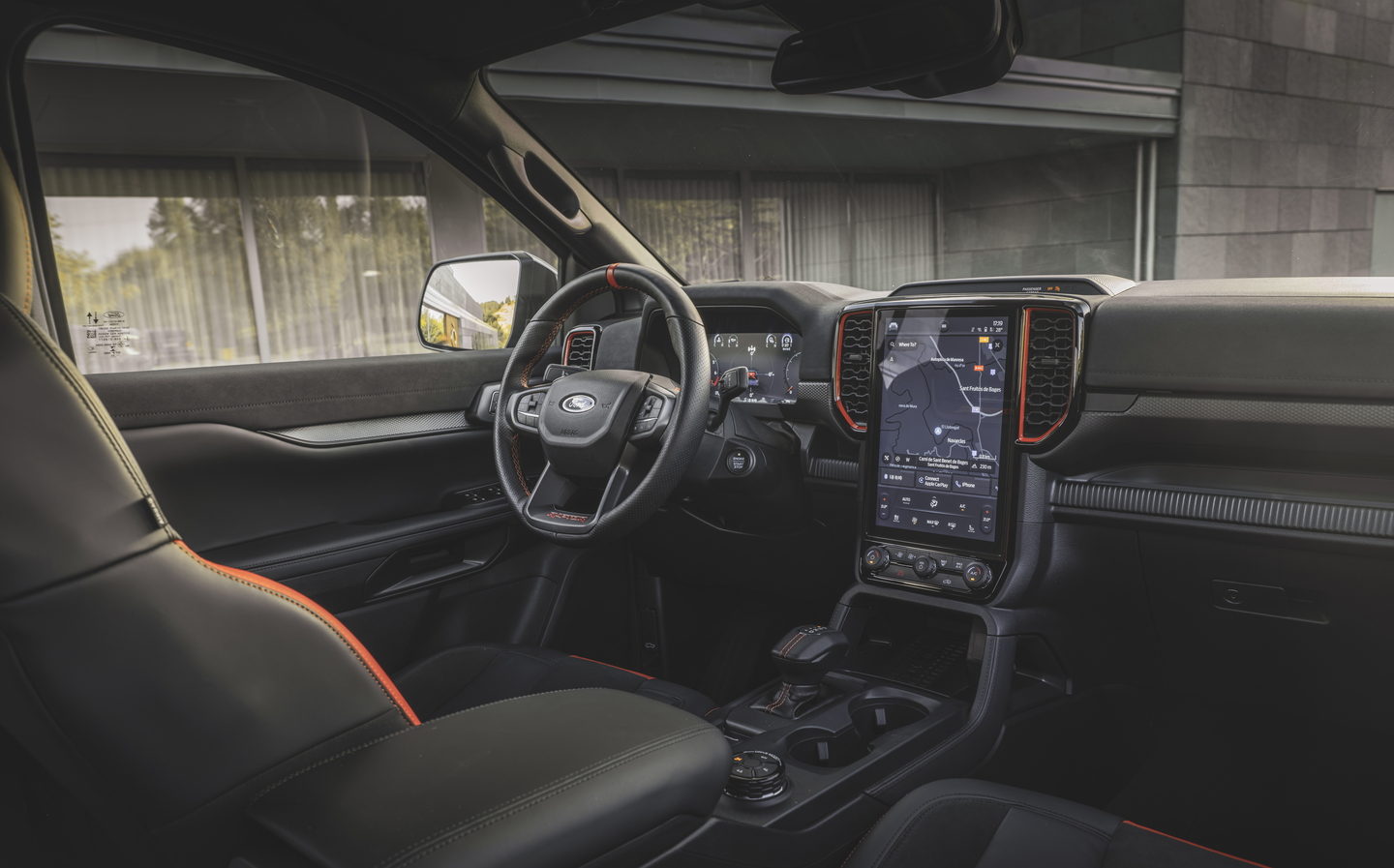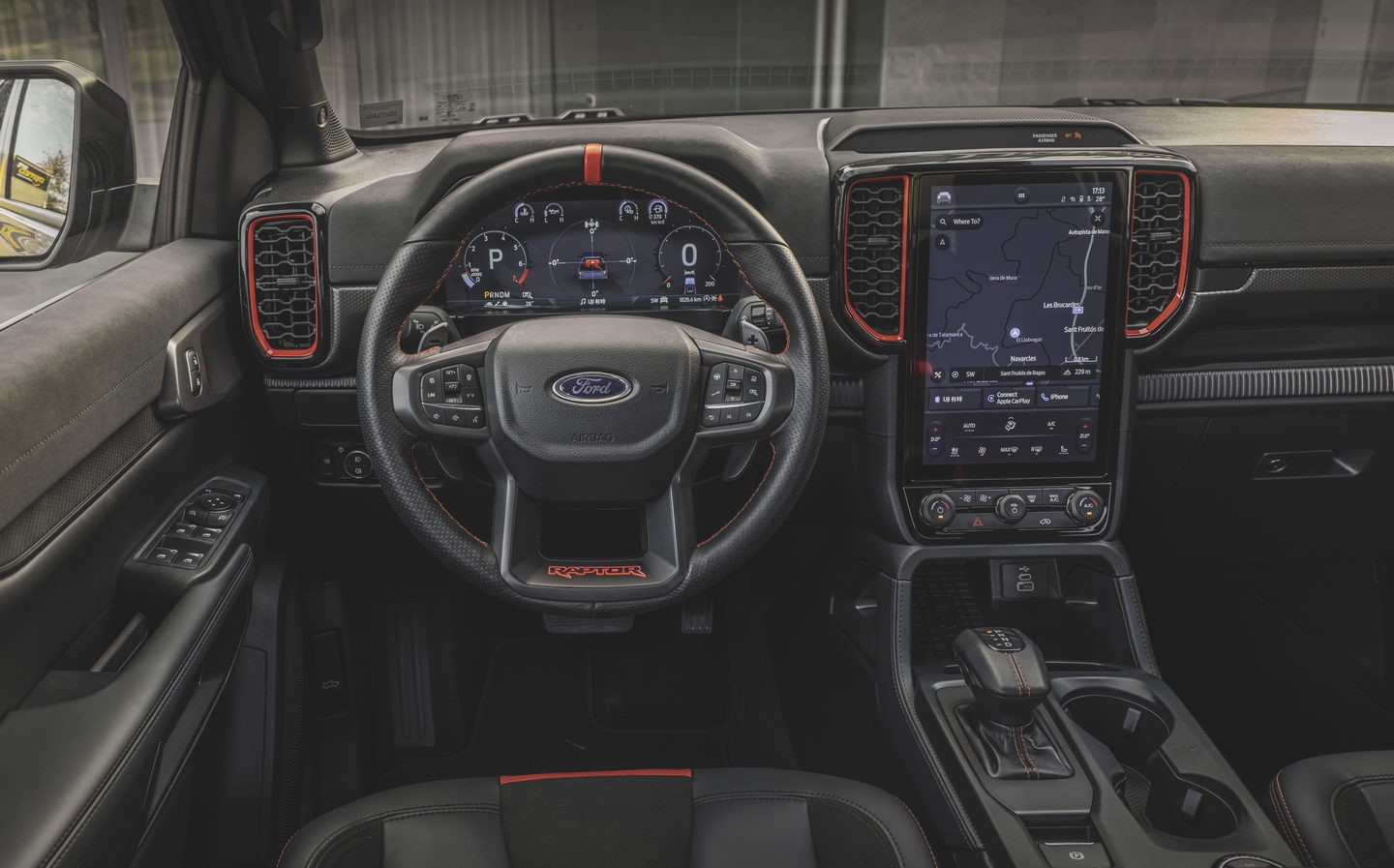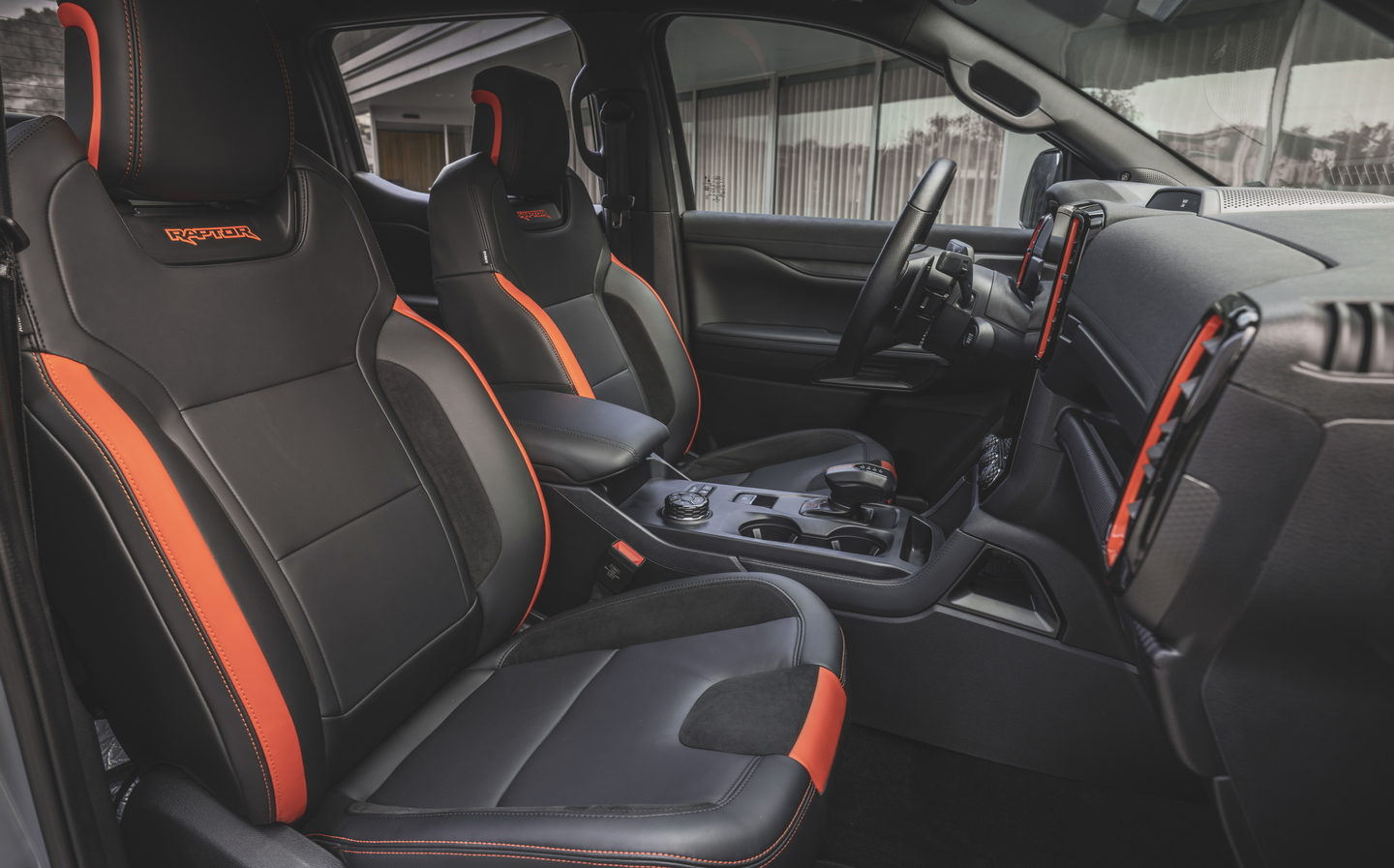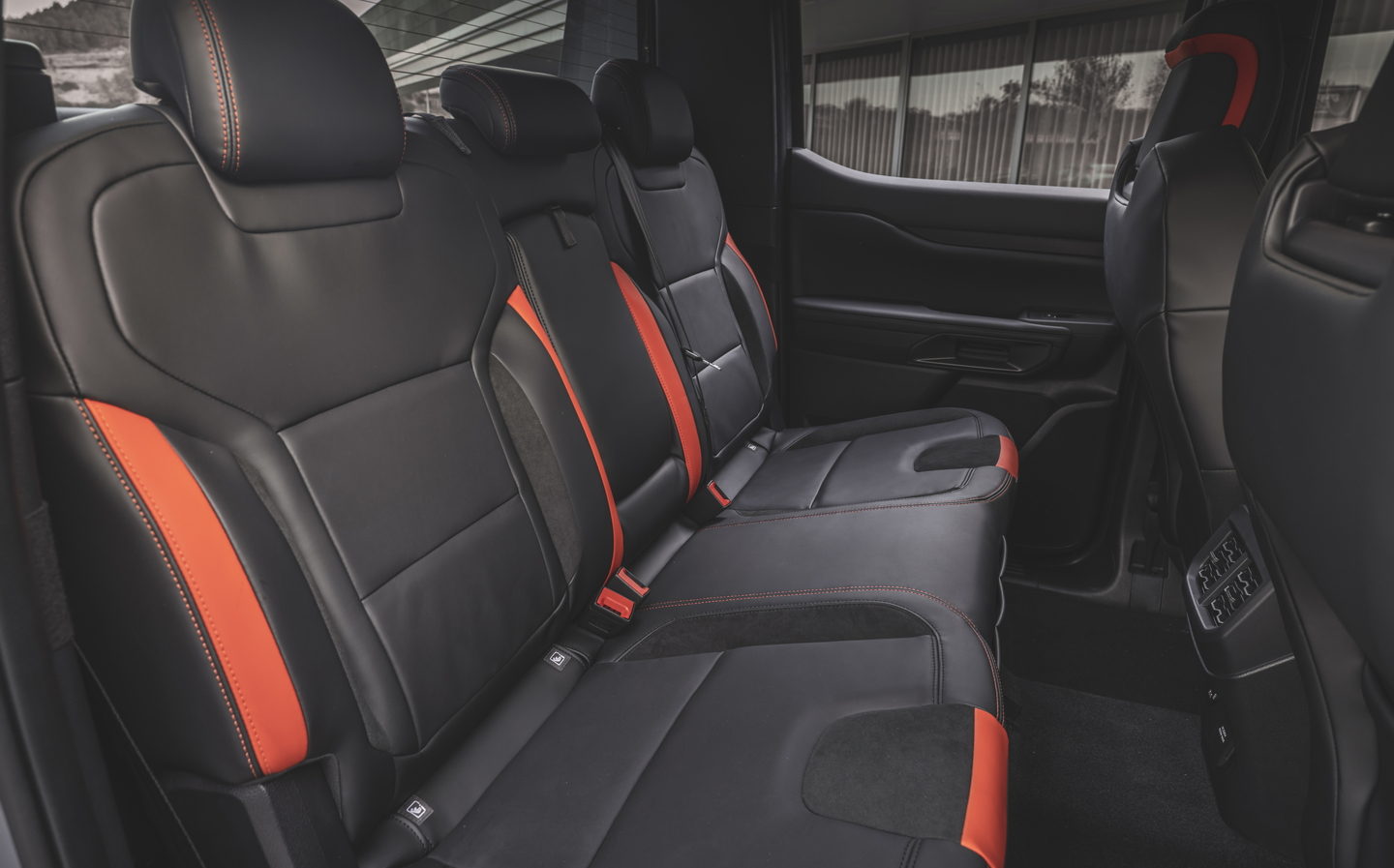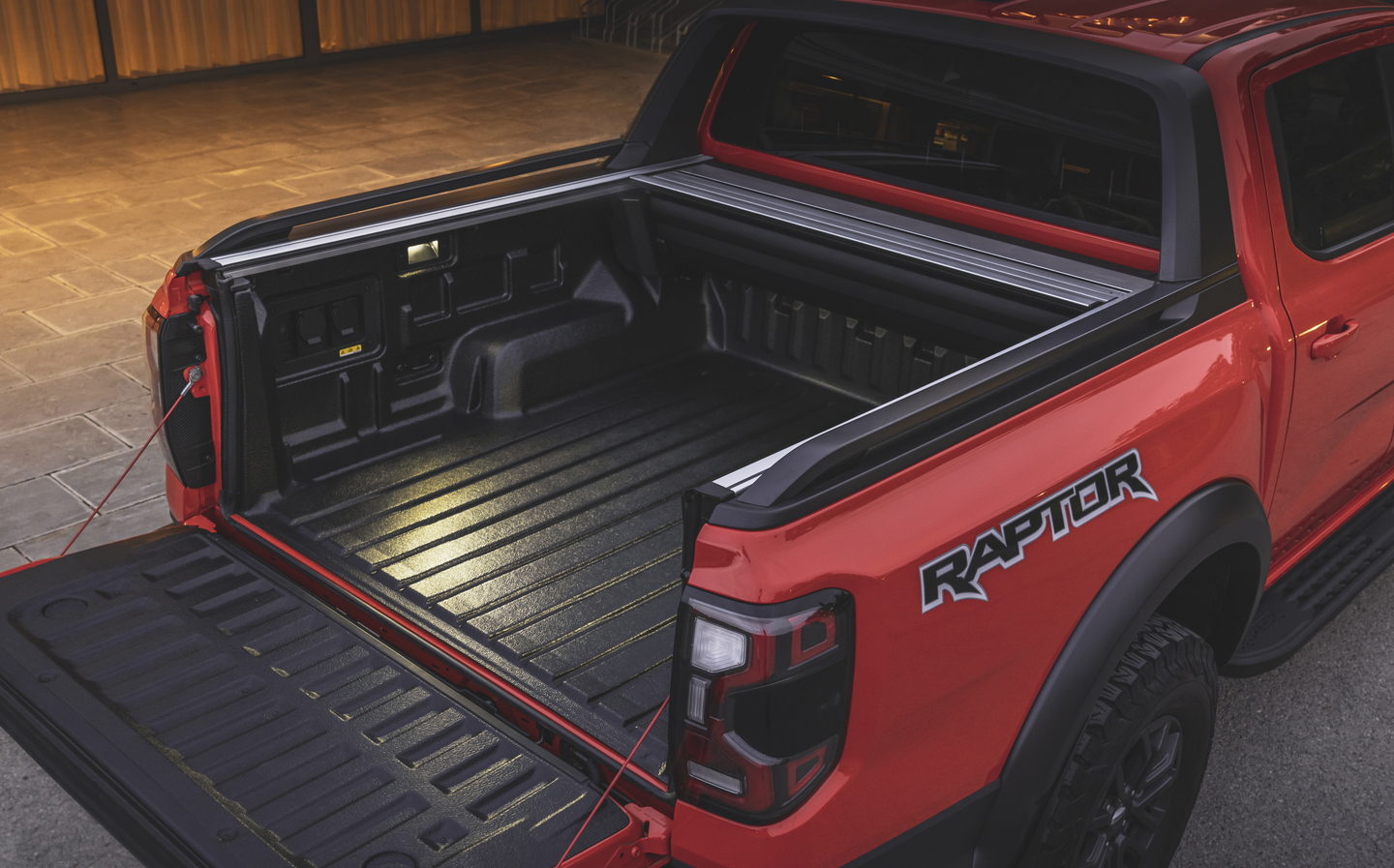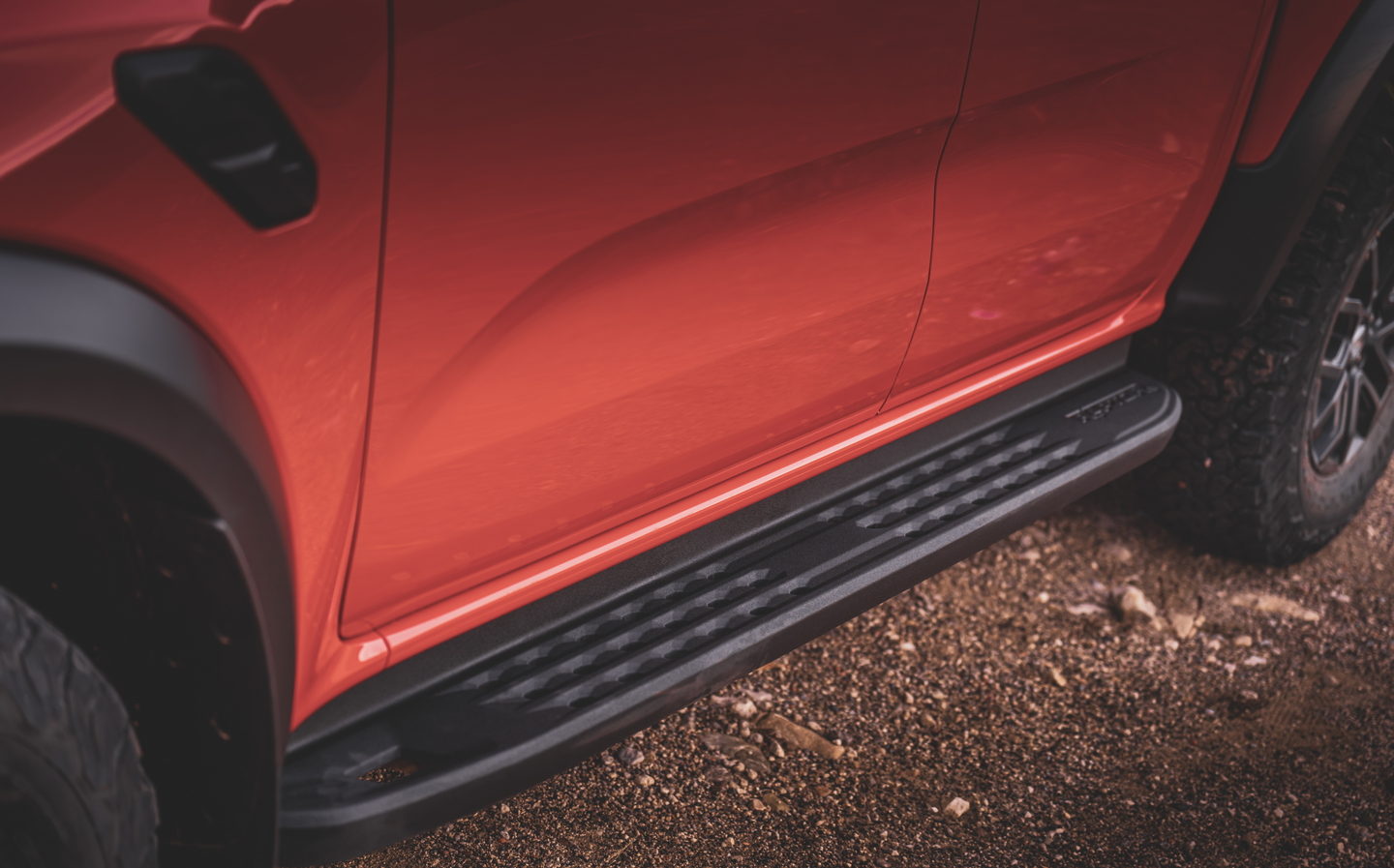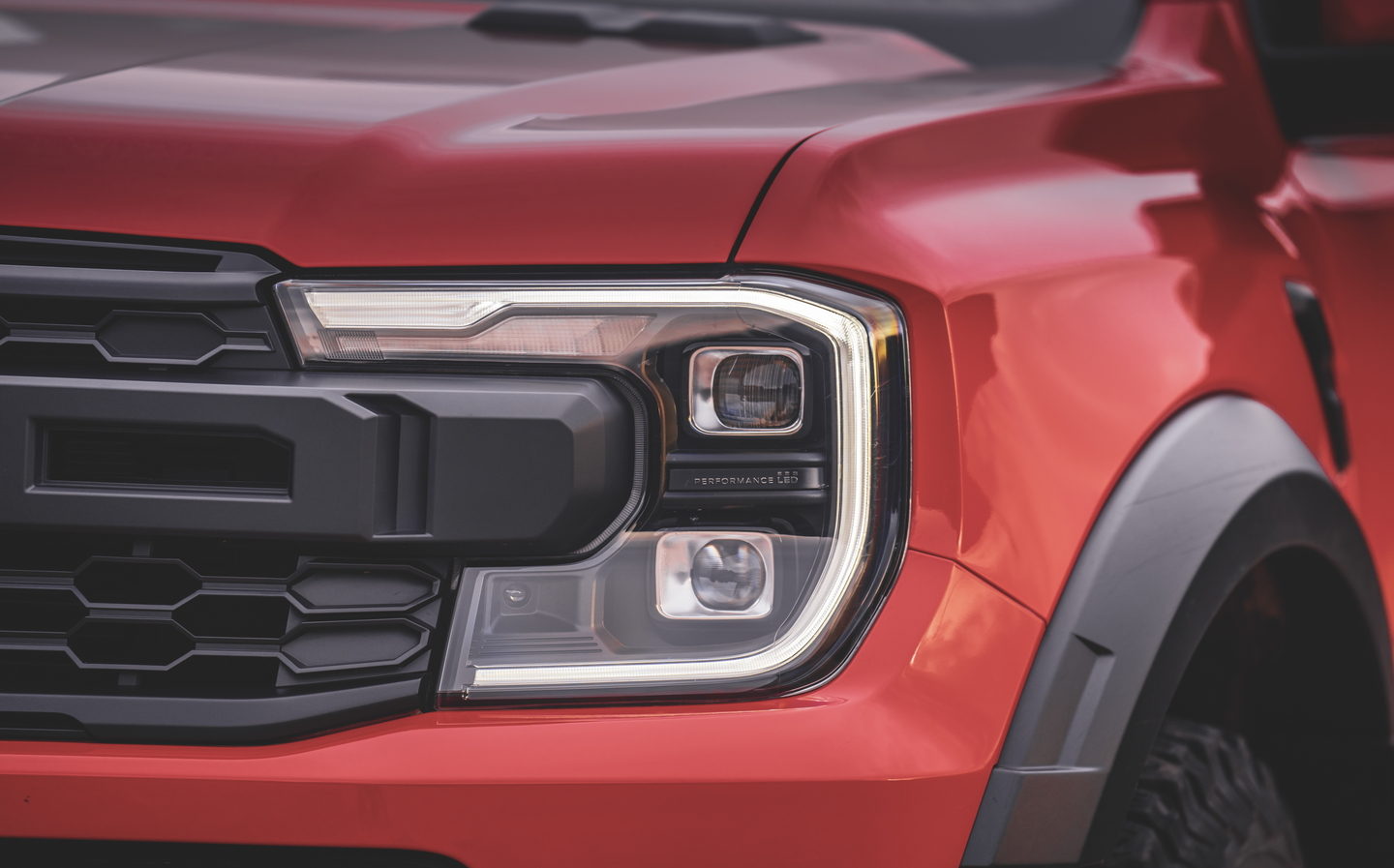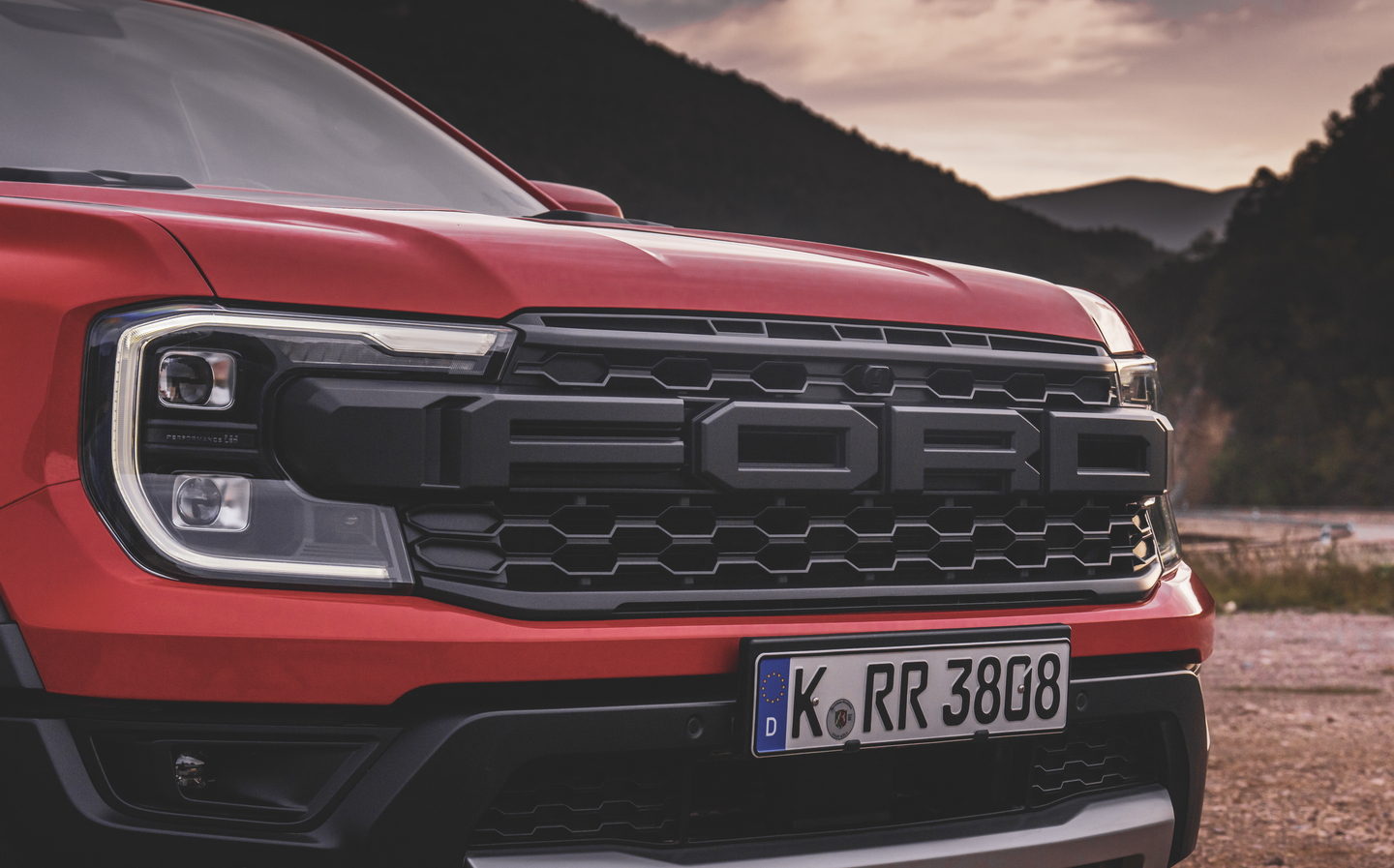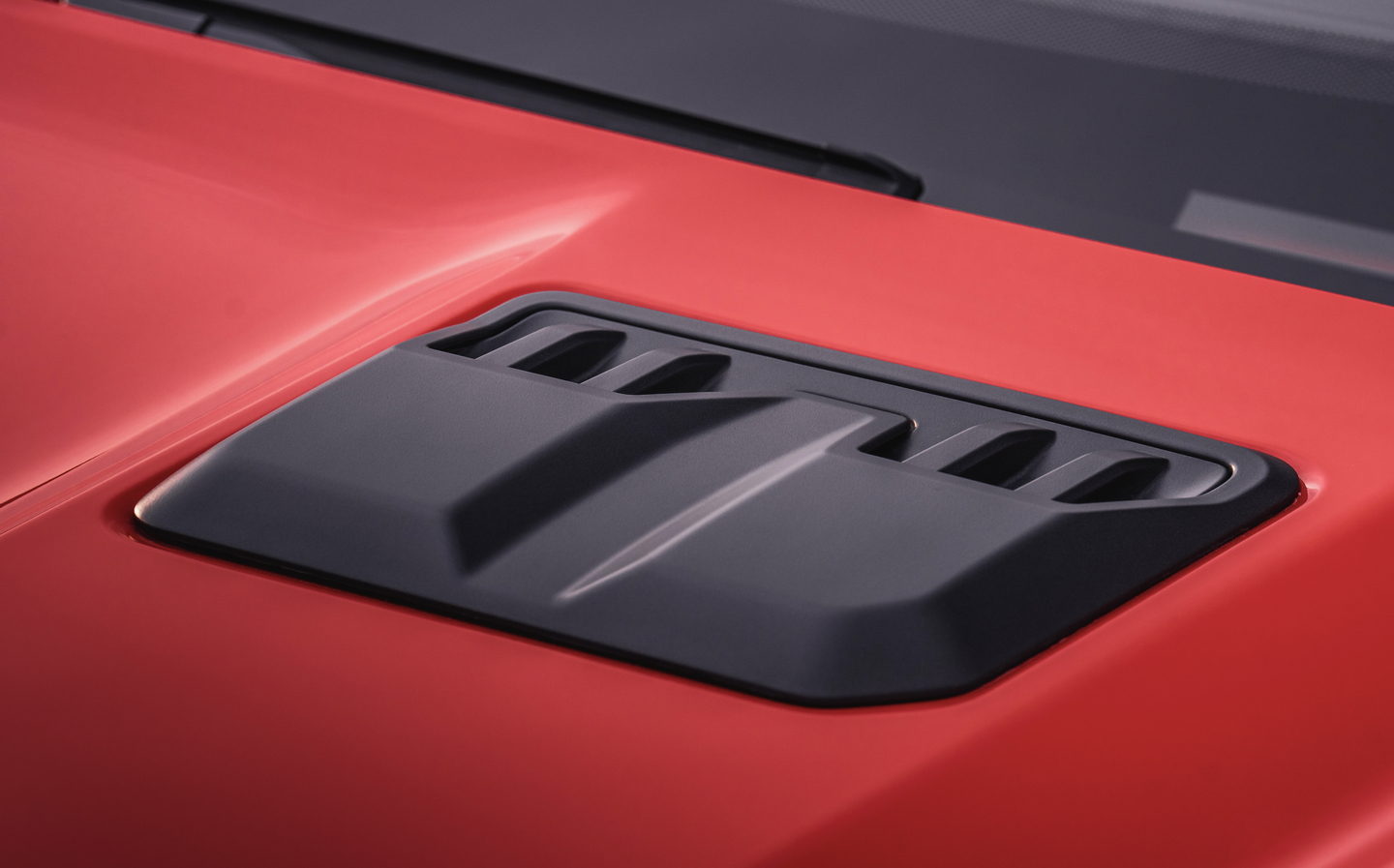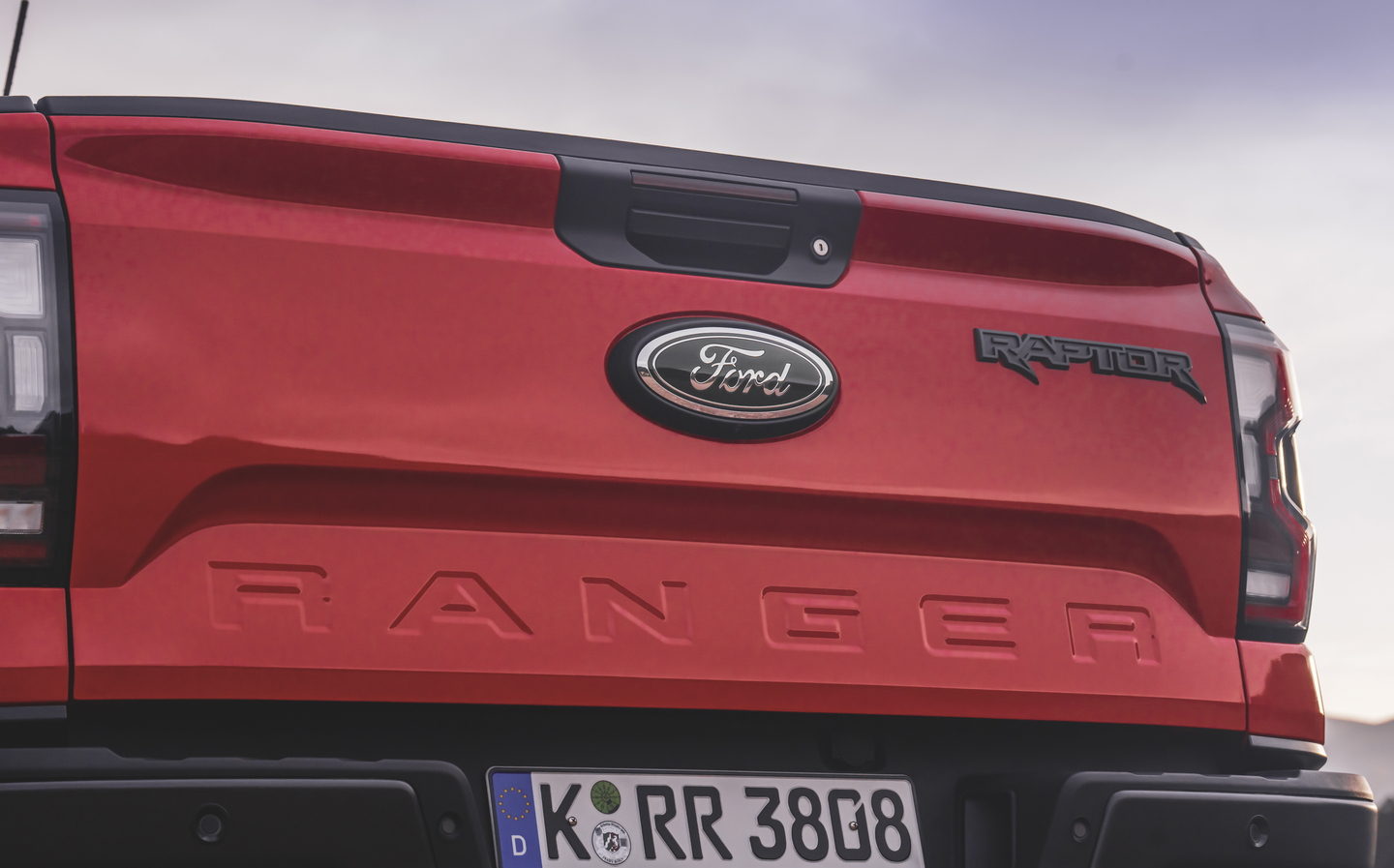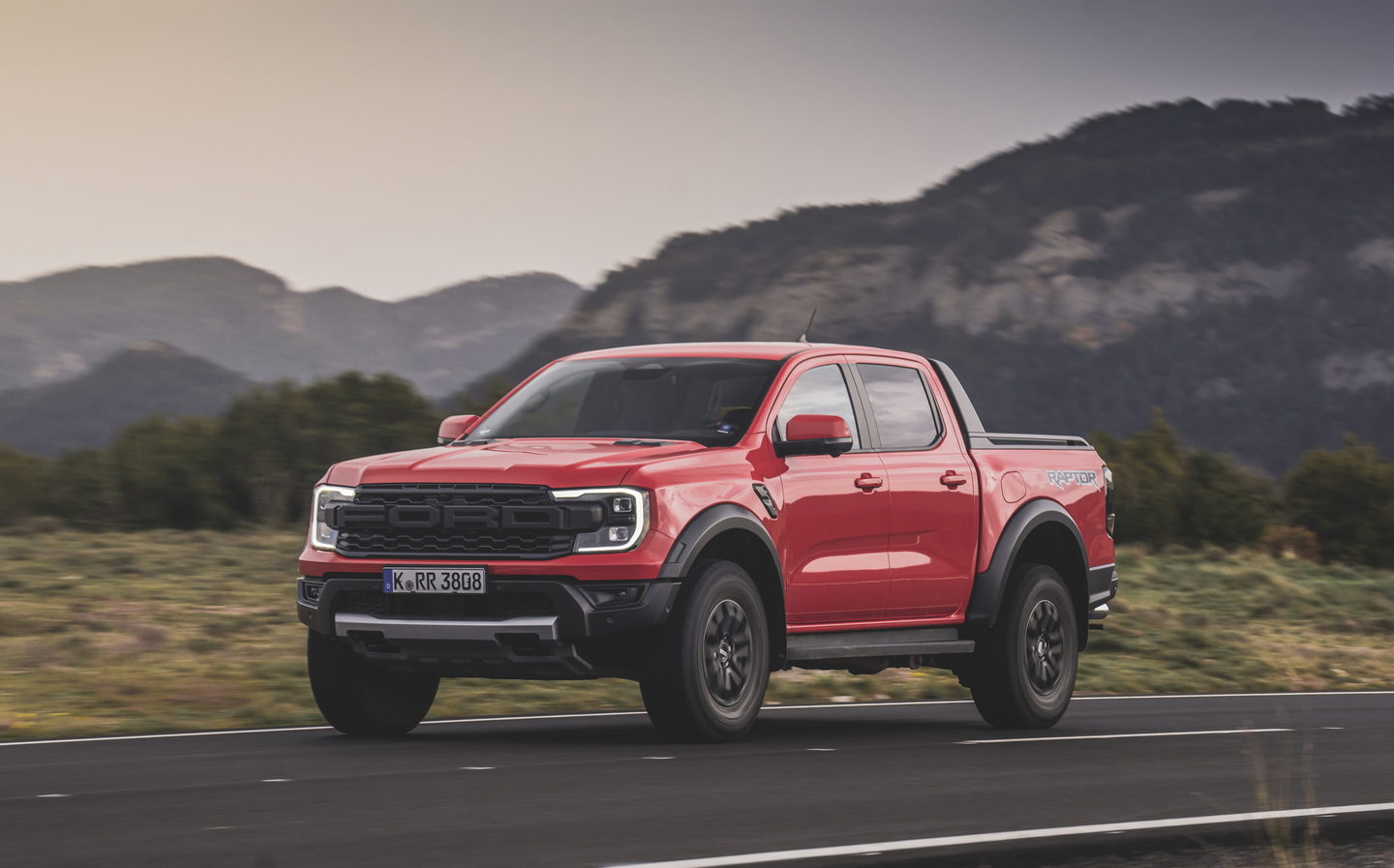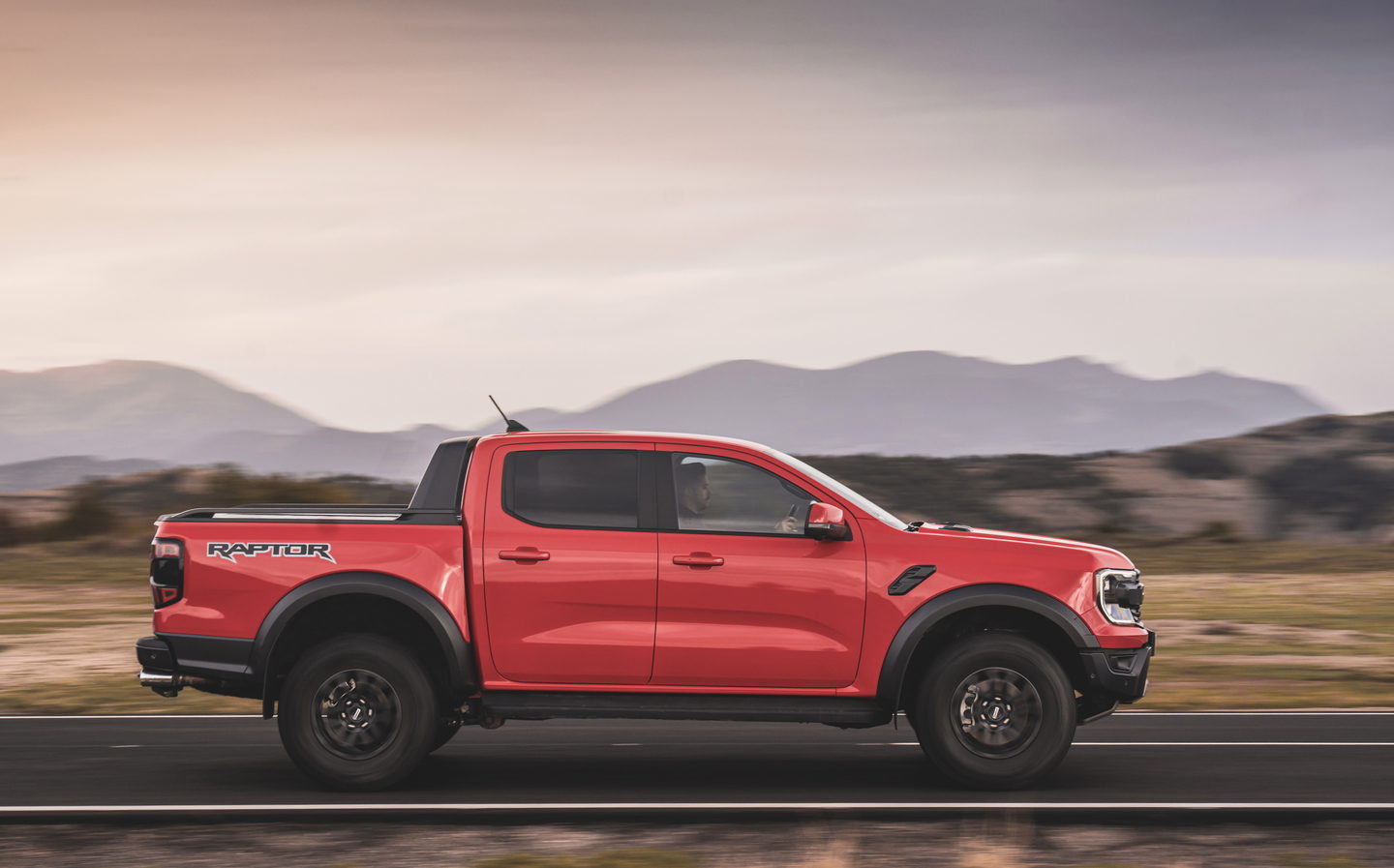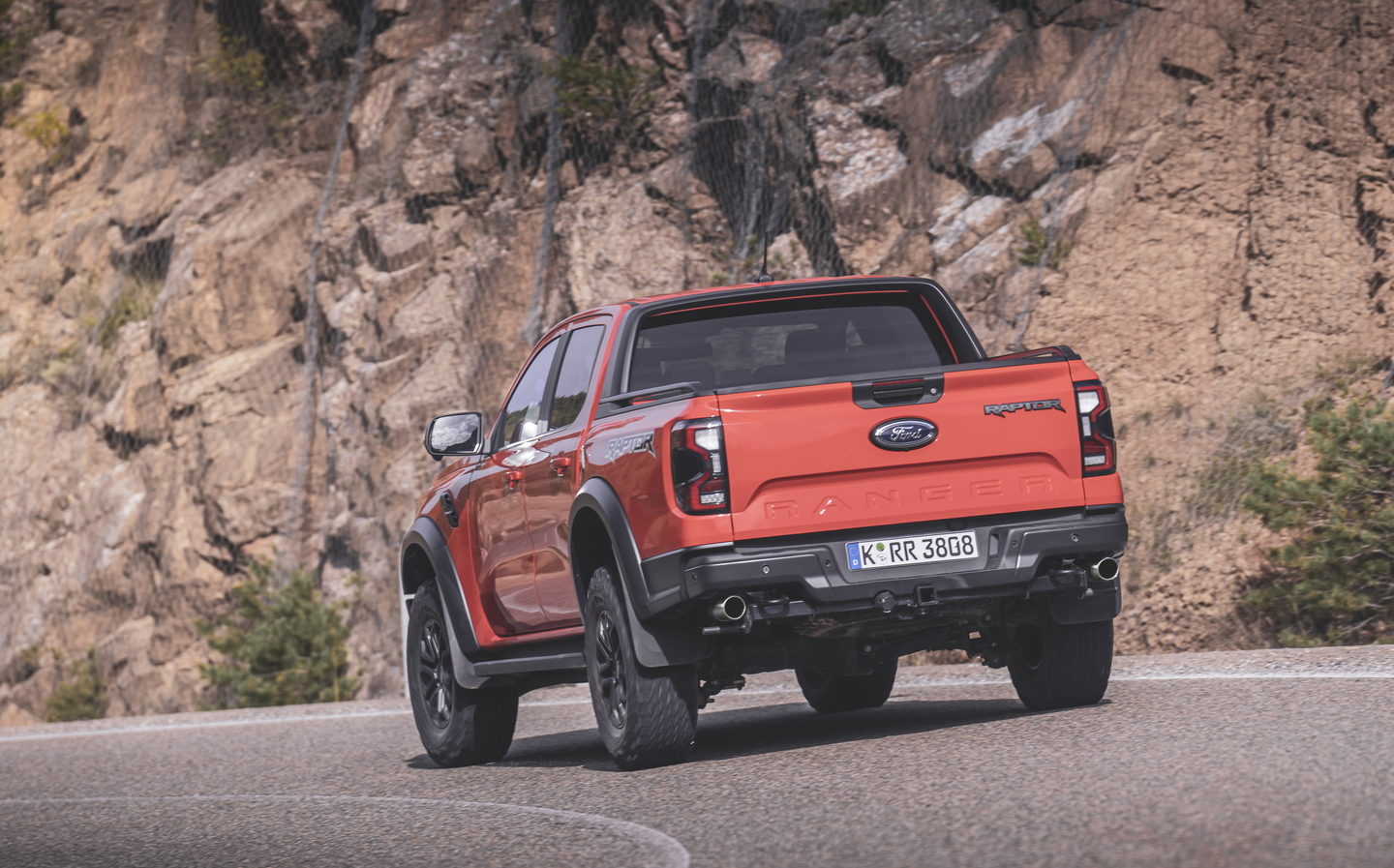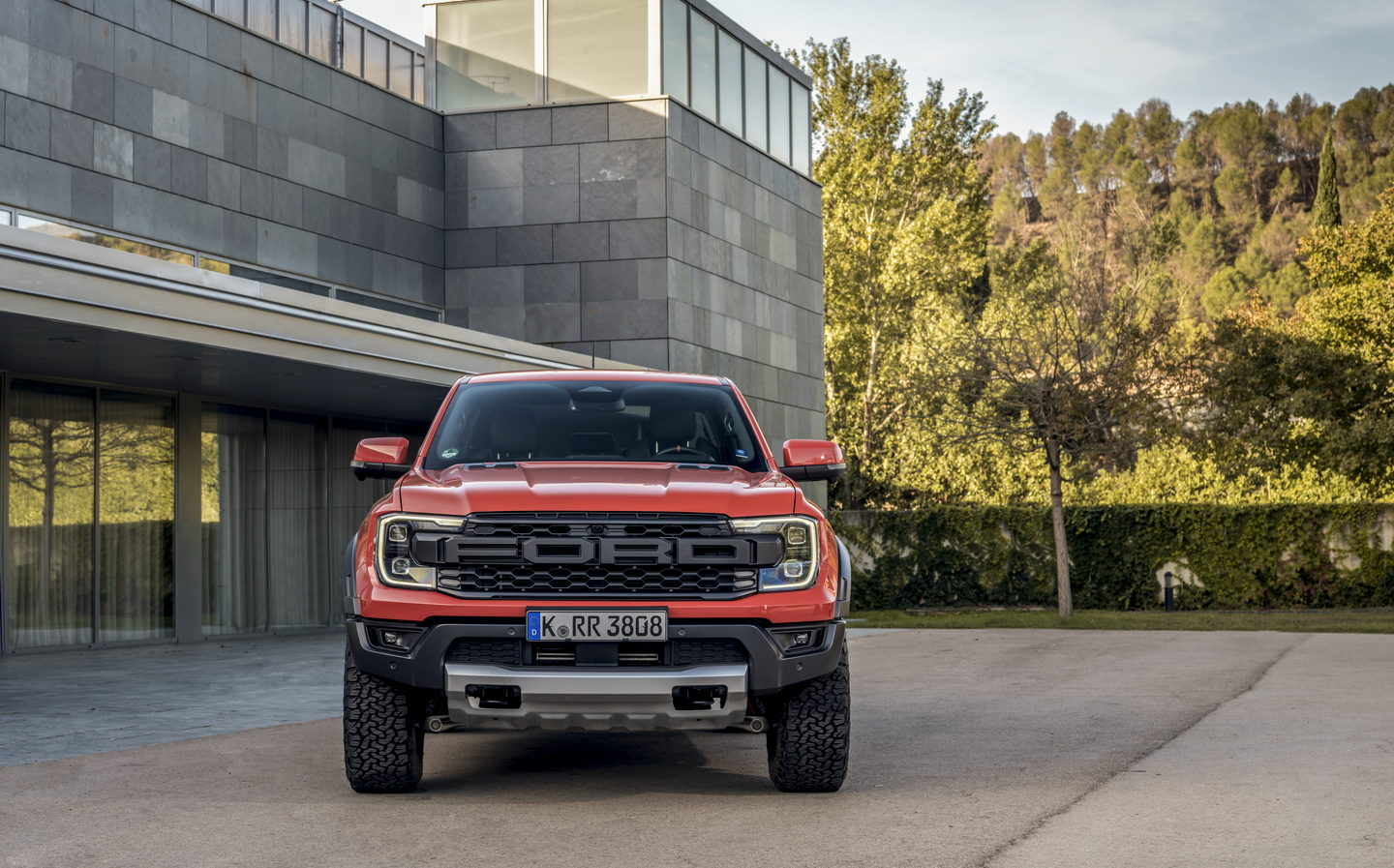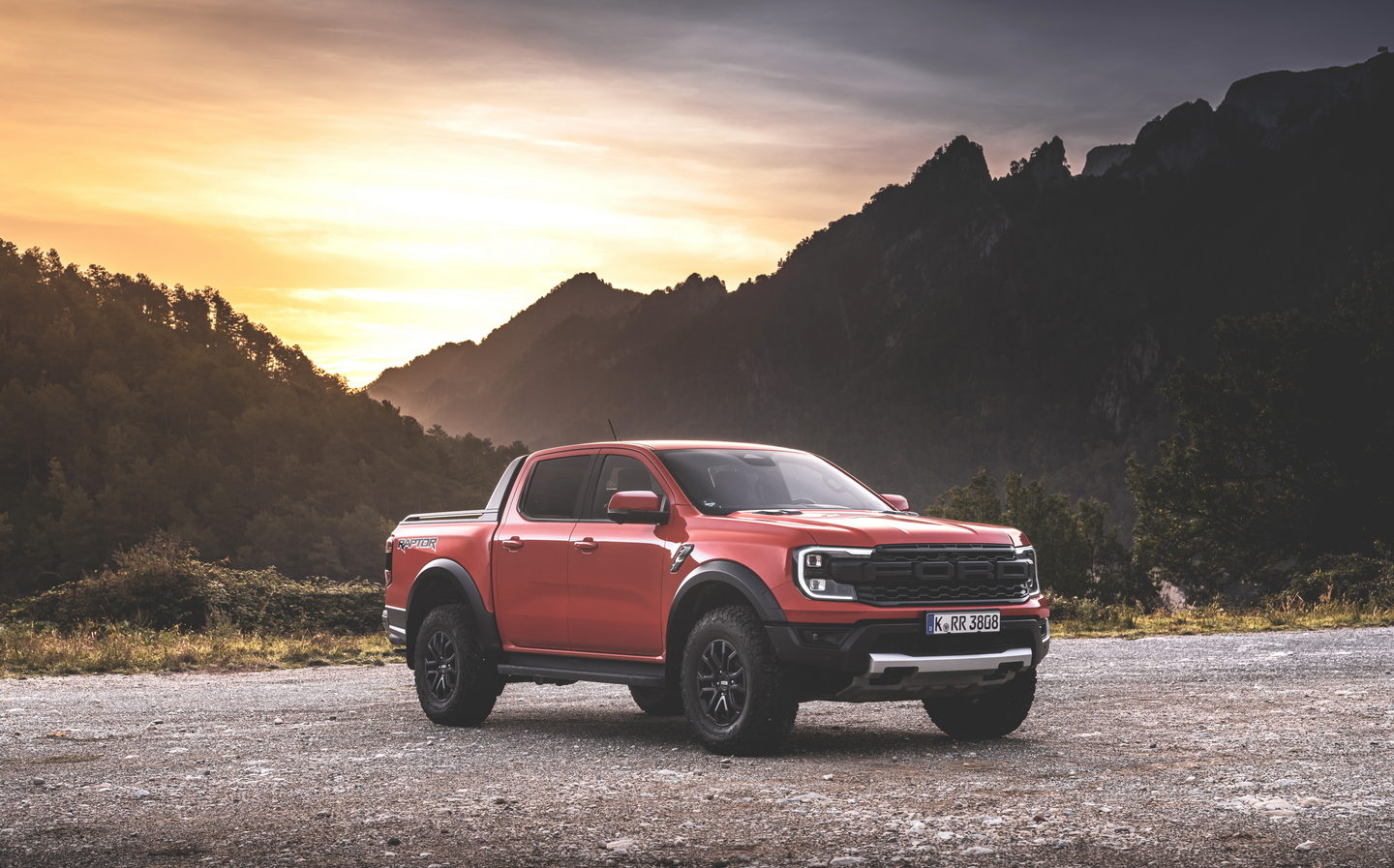Ford Ranger Raptor 2022 review: American looks, brawny engine and serious off-road capability
The Raptor has evolved
With the SUV market at saturation point demand for the more humble pick-up is surging. Already the vehicle of choice for tradespeople around the world, pick-ups are increasingly being considered as a lifestyle-oriented all-wheel drive option by car buyers.
For some years, the Ford Ranger has ticked the utility box in the pick-up segment but it gained a new audience with the introduction of the sports-focused Ranger Raptor, with its rally-bred suspension, punchy engine and far-from-utilitarian limited payload capacity.
Now there’s an all-new model that raises the bar even higher with looks that will satisfy even the most committed attention-seekers — and it backs that up with a more powerful engine. Its payload is still limited, though, underlining the fact that the Raptor is meant to be an off-road plaything rather than a commercial vehicle.
Does it fall between two stools or does it have enough appeal to satisfy the customers outlined above?
Exterior design and rivals
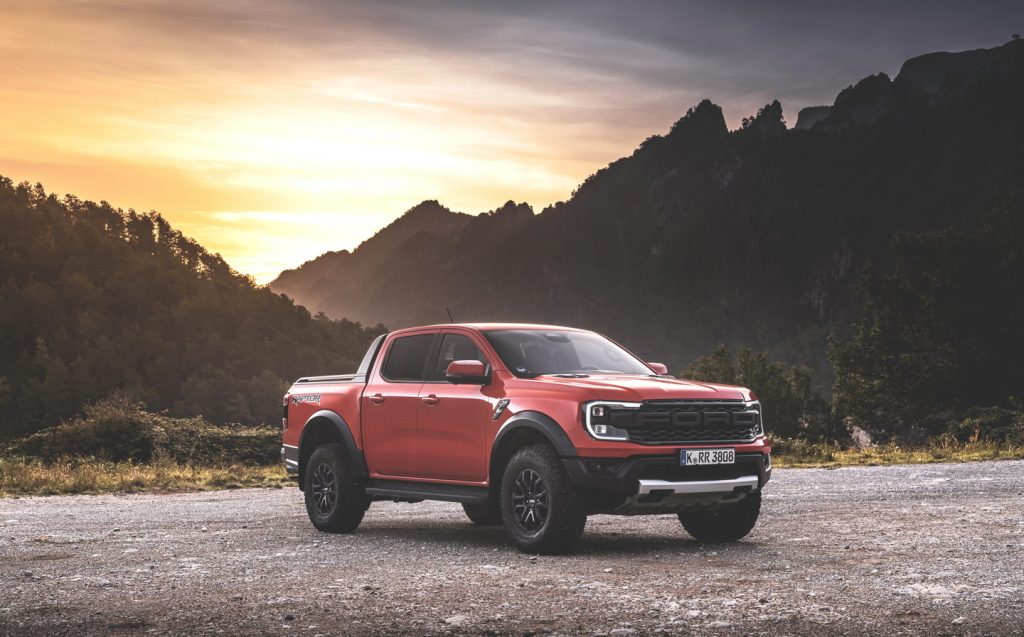
The pick-up as we used to know it is changing, with much more influence from the USA than ever before. We still have tough pedestrian safety regulations and narrower roads over here, though, so the models in the new generation of trucks are not quite as gargantuan as they could be. But nobody could deny the Ford Ranger Raptor has imposing presence.
The standard Ranger will fulfil most of the sales and load-lugging functions for Ford customers, leaving the Raptor as the halo car -— a high-performance machine aimed at those who enjoy Baha-level off-roading at speed, or at those who simply want to make a statement.
The Raptor clearly differs from the regular Ranger at the front with its big and bold F-O-R-D name spelled out across the nose, in a nod to the beastlier F150 Raptor sold Stateside.
A trimmed front bumper provides a better approach angle when off-road and further differentiates the Raptor from the regular Ranger. There are vents stuck onto the bonnet and front wings, though these serve no purpose other than styling, which seems out of odds with the remit of the rest of the vehicle.
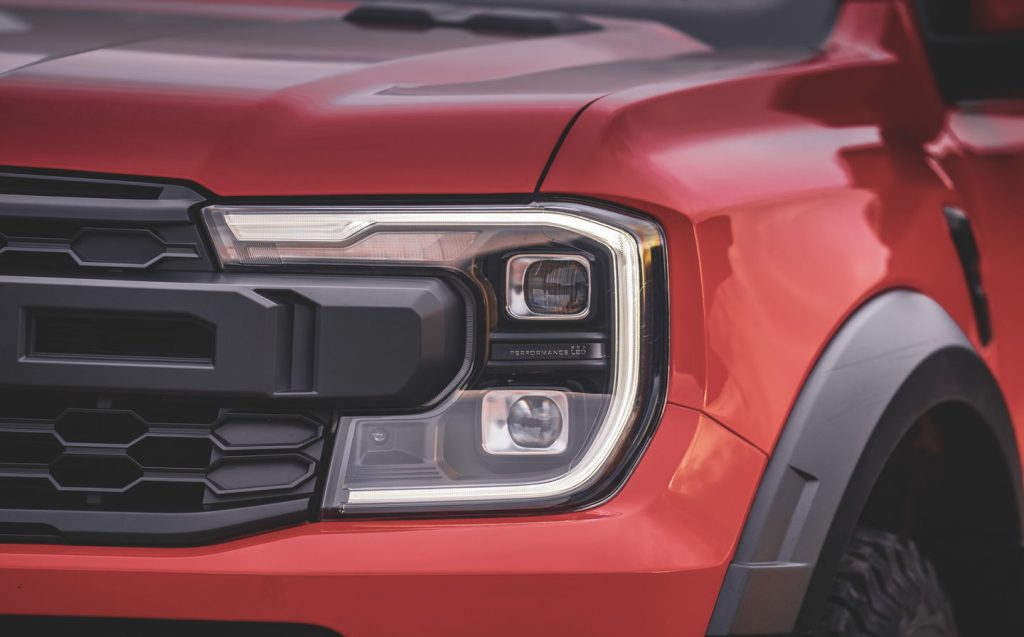
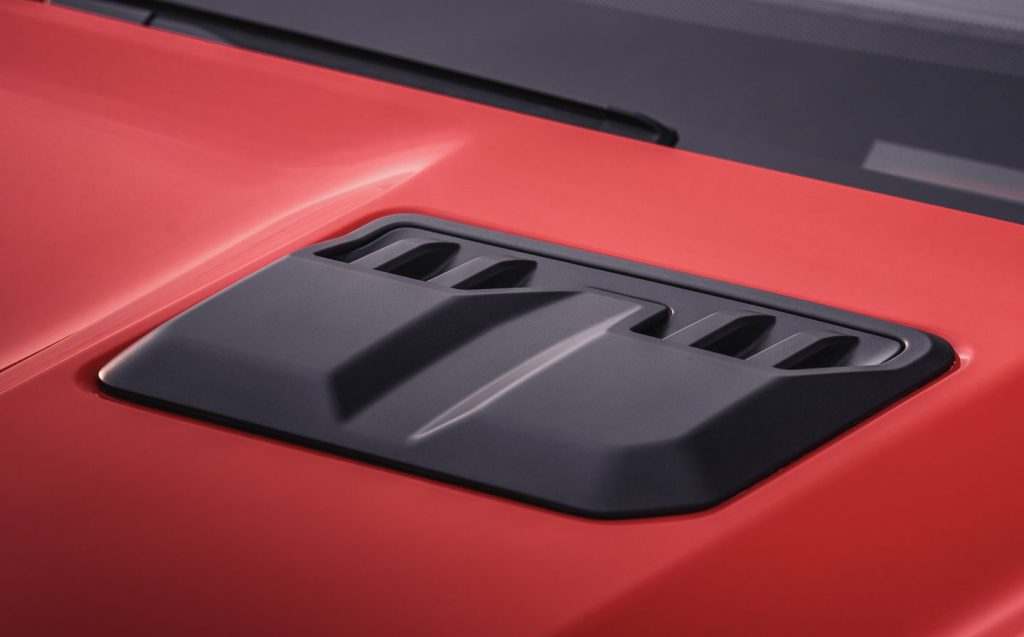
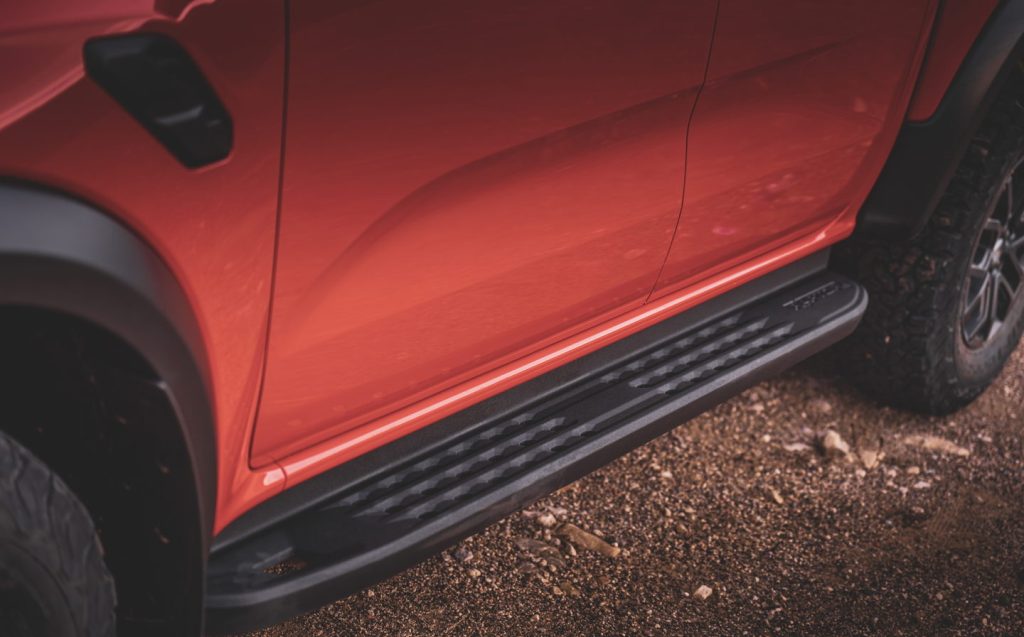
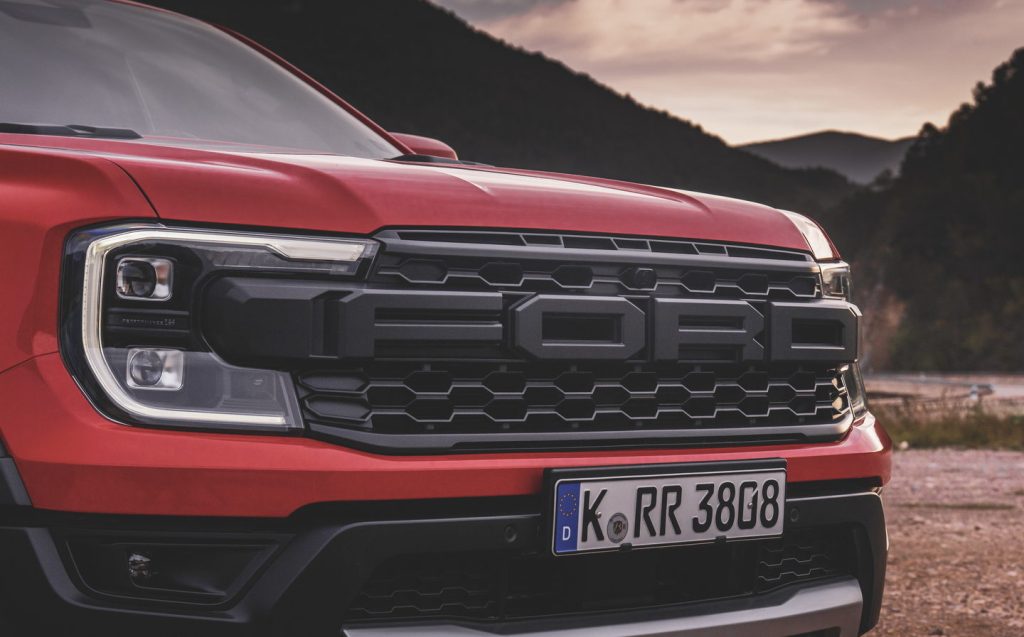
Chunky side steps, meanwhile, make climbing up into the cabin a little easier, and the Raptor name is emblazoned across the rear wings. Ford offers a more lurid graphics pack as an optional extra.
Along with suspension that lifts the ground clearance, the Raptor runs on 17 x 8.5in alloy wheels unique to it. These are shod with Continental General Grabber LT 285/70 R 17 all-terrain tyres from the factory.
When it comes to rivals on this side of the Atlantic, the Ranger Raptor almost has none. Only the Toyota Hilux comes close to its durability but even then it can’t match the engine’s performance, so you’d need to get in touch with the engineers at Arctic Trucks to make something comparable.
Incidentally, though Ford has co-developed the Ranger with Volkswagen — it forms the basis for the new Amarok — the German marque has no plans for an extreme version to compete with the Raptor.
Interior and practicality
Interior design has rarely been one of Ford’s strong suits but the company has been making decent improvements in recent years (the Mustang Mach-E is a clear shift upmarket) and the cabin of the Ranger Raptor is refreshingly different to that of the outgoing model.
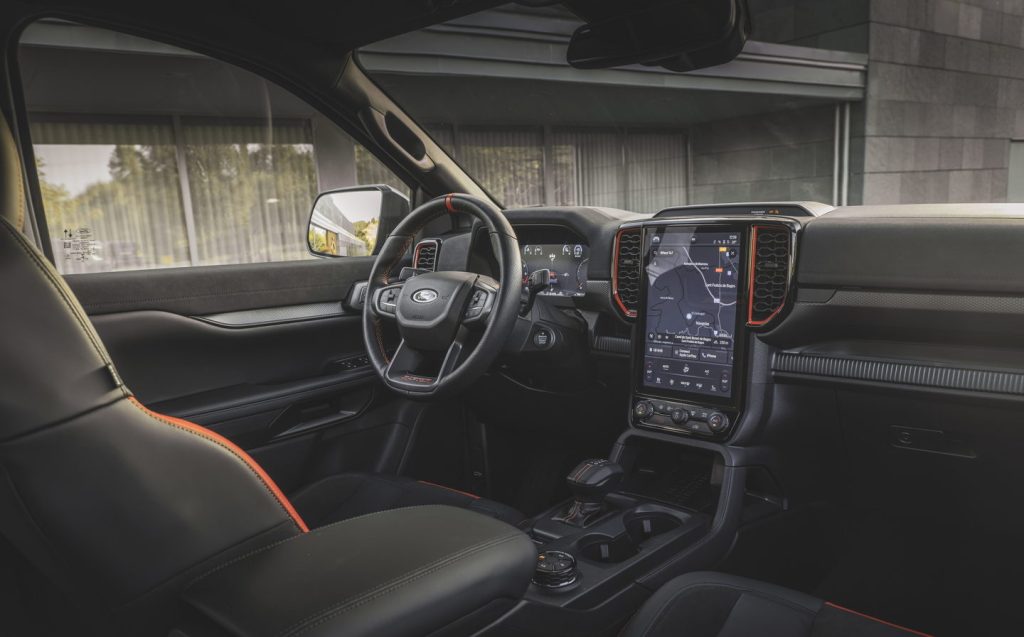
An all-digital affair with a 12.4in display replaces the old analogue instrument cluster with graphics worthy of the Gran Turismo video game — and plenty of menu screens showing information from a variety of driving modes.
Ford’s latest “SYNC 4A” system may sound like nothing more than a software update you’d download for a phone but the whole system is pleasant to use, easy to navigate and, just as importantly, the screen reacts quickly to inputs. One further plus we’re fans of is that Ford has retained physical dials for adjusting the cabin temperature, even though it can be done via the touchscreen, too.
Ten-way electrically adjustable seats are standard and make finding a comfortable driving position a cinch for those of all shapes and sizes.
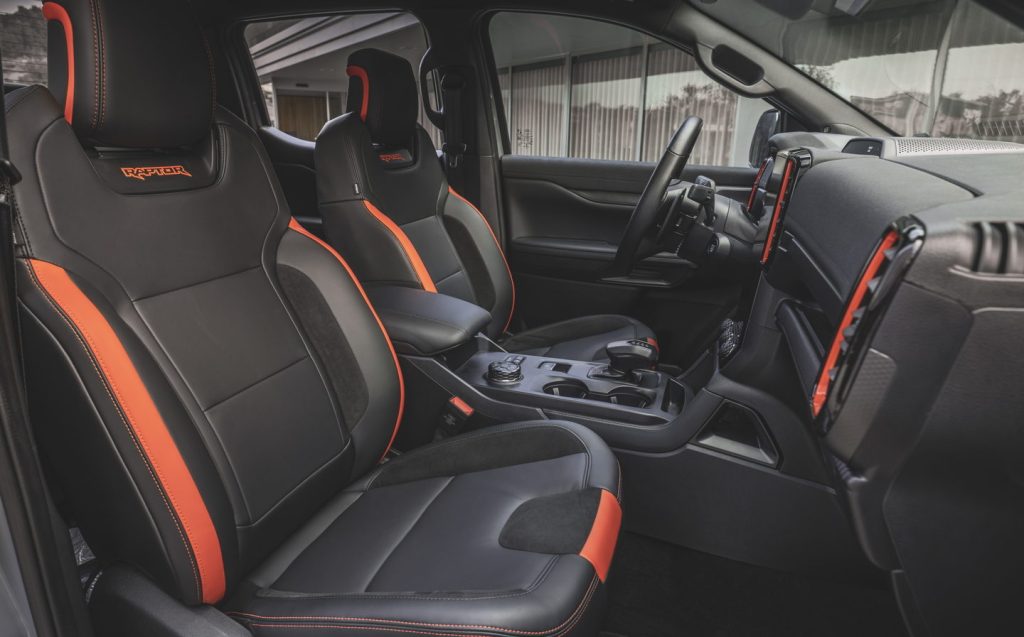
Ford says that its stylists took inspiration from the F22 Raptor fighter jet when designing the front seats. That makes for a fun soundbite but, other than the flash of “Code Orange” material on the side bolsters, they’re nothing special and lacking in sufficient side support, especially around the shoulders. It’s less obvious when you’ve the steering wheel to hold onto but the passengers will notice.
Ford knows that people who buy this vehicle will want to equip it with accessories, so it provides six slots that are pre-wired into the car. The switches are toggle-style and mounted onto the roof above the rear-view mirror, providing two for the front, two for the roof and two for the rear.
There’s space for three across the rear of the cab, though the bench seat is designed with two clear perches on the outer sides and there are no Isofix points for the centre perch, so it’s best to think of the middle seat as an occasional use item.
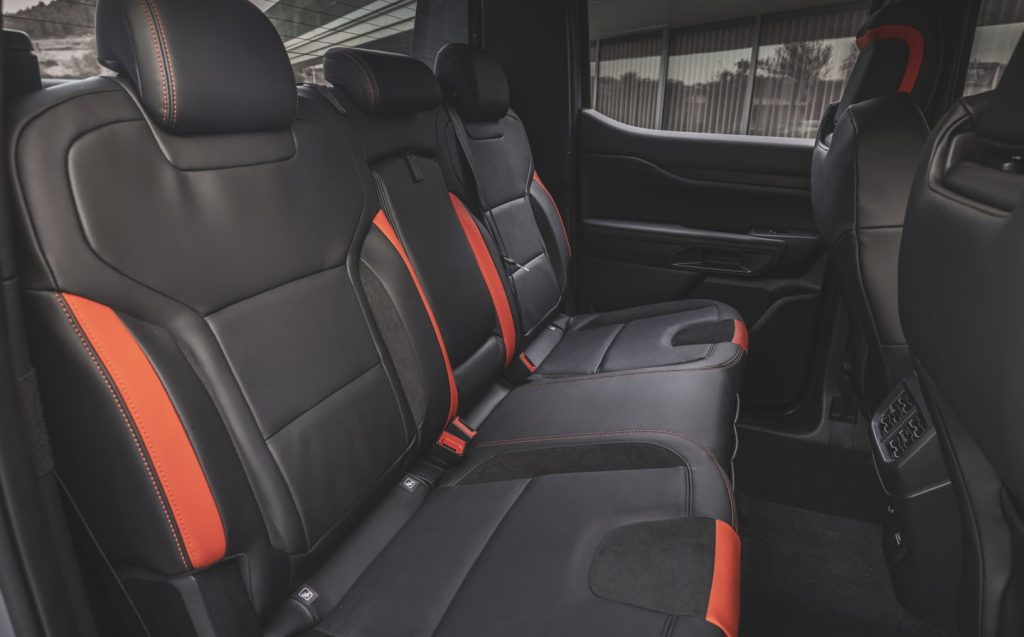
At the business end, depending on your perspective, the cargo bed is a decent size but due to the suspension setup of the Ranger Raptor, its maximum carrying capacity is limited once again — to 652kg. Not only does that limit its potential for lugging heavy loads but also means it isn’t classed as a commercial vehicle, and so VAT can’t be reclaimed after purchase. That may be a deciding factor for some potential customers.
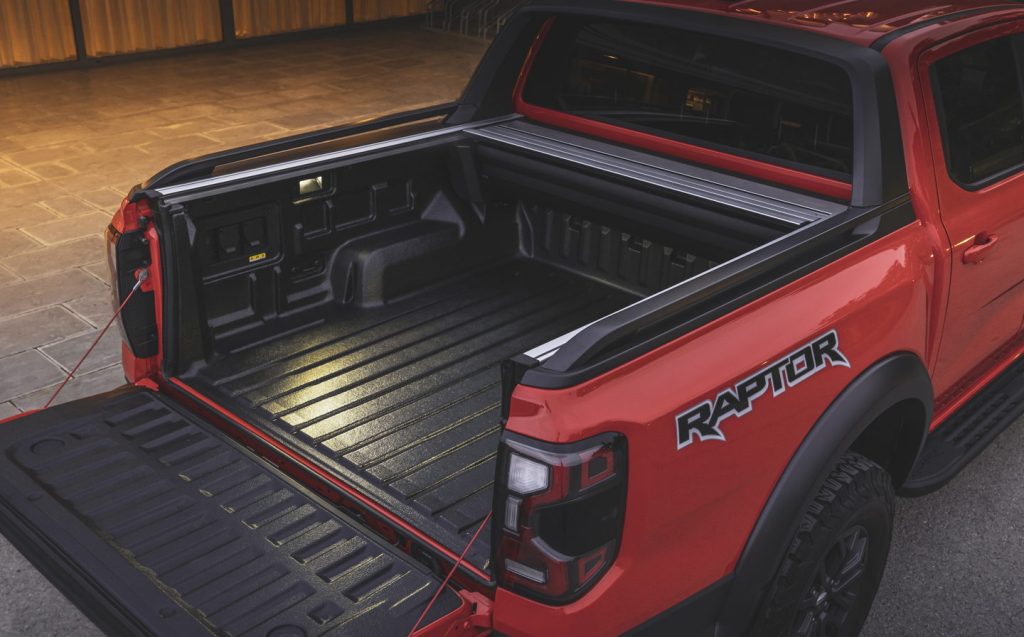
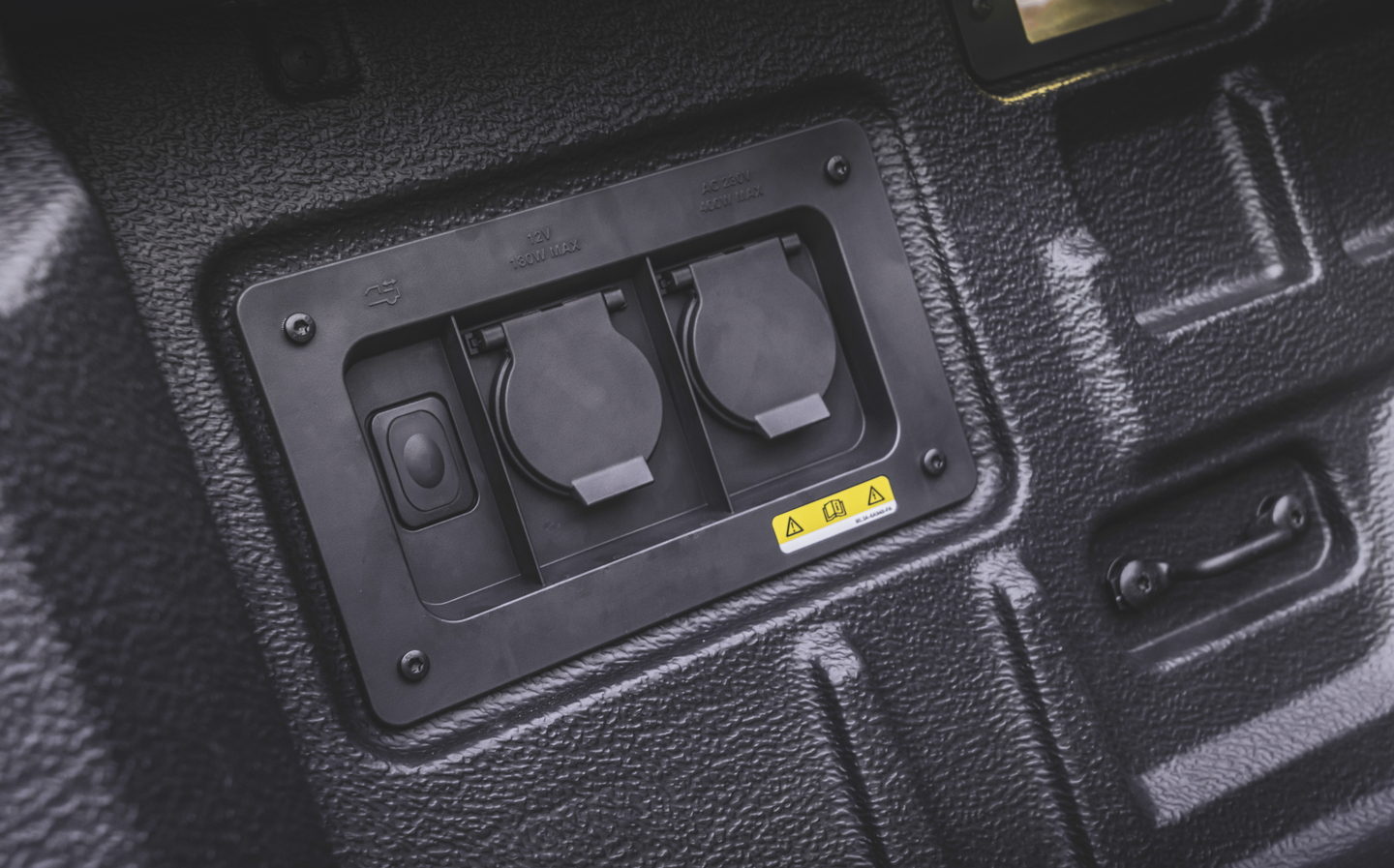
But many will be prepared to forgo that given what its rally-bred suspension makes possible (see below). And another plus is that the Raptor gets Ford’s Pro Power Onboard system, as seen on the e-Transit and F-150 Lightning for the US market, which provides an electrical supply to outlets in the rear that can be used to operate power tools or even charge up the battery for your electric mountain bike when you’re on the way to the trails.
Technology and safety
Most of the trick bits of the Ranger Raptor are to be found underneath, where the chassis is beefed up and the suspension choice designed to tackle everything that the Baja desert race can throw at it. Key to this is the Fox Live Valve spring and damper units that feature on all four corners.
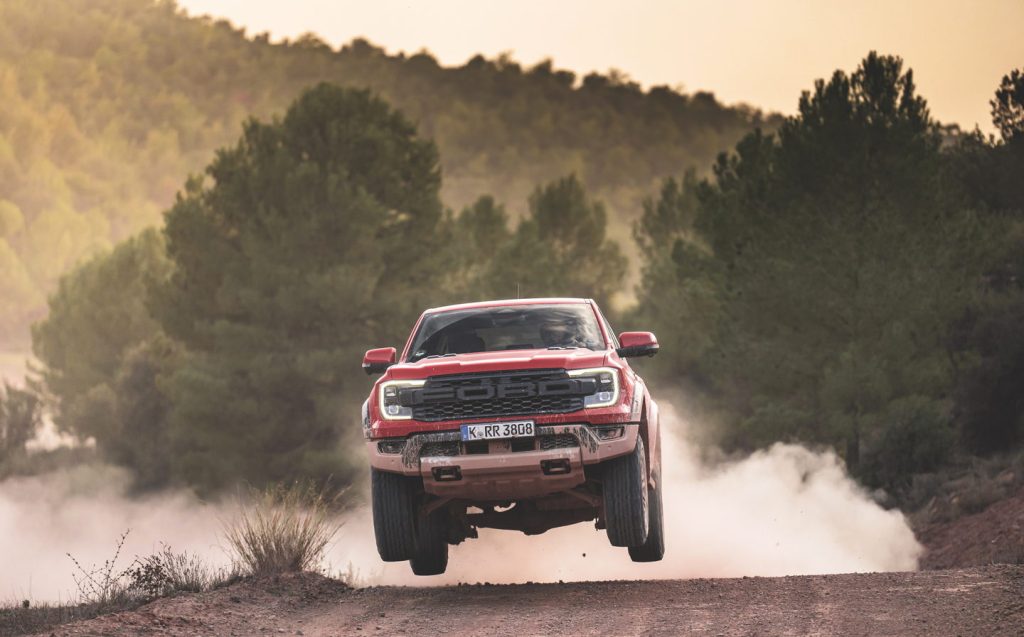
They use an internal bypass system with position-sensitive damping controlled by electronics developed in-house at Ford. In plain English the car uses its sensors to know exactly how it is moving and even if it is in the air, and adjusts the suspension to be ready for what’s coming next. It takes these measurements 500 times per second to ensure optimal responsiveness.
Helping to manage body control and the like, Ford equips its pick-up with all of the usual electronic control aids, many of which are specifically tuned for use in off-road conditions. These enable drivers to keep them enabled while still allowing a bit more fun before intervening.
In-car safety includes front and side airbags plus a central airbag between the front seats to prevent driver and passenger from colliding in the event of a side impact.
Performance, power output and acceleration
Many commentators were surprised that the old model came with a diesel engine, given its Raptor namebadge, so it may be pleasing to many that, initially at least, the sole engine available will be a twin-turbocharged 3-litre V6 petrol.
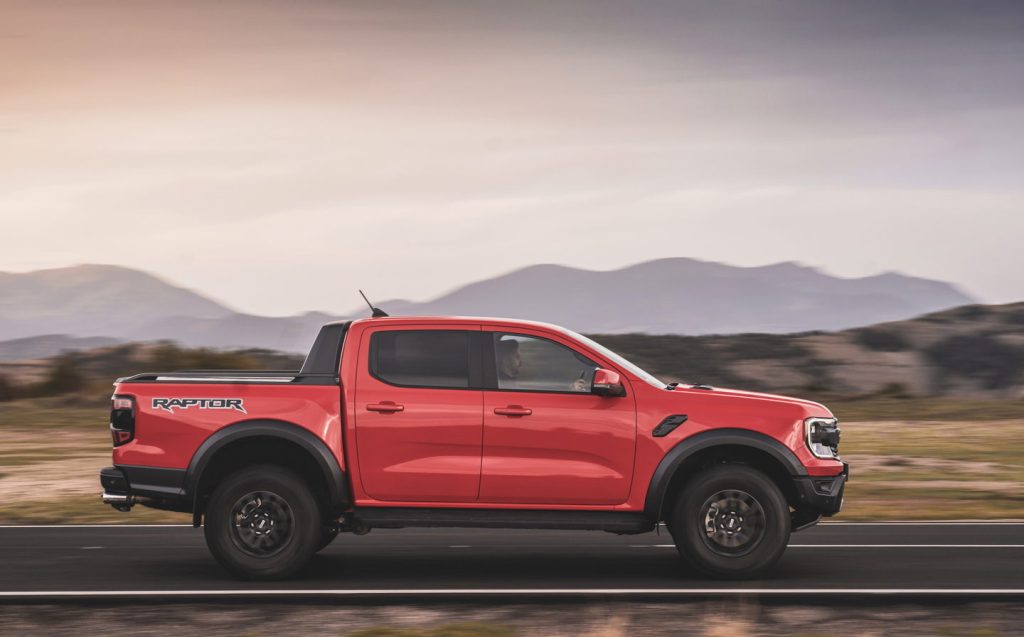
This motor produces 288bhp and 362lb ft of torque, and is mated to a ten-speed automatic gearbox with four-wheel drive. That’s sufficient power to accelerate the bulky Ford from standstill to 62mph in 7.9 seconds and nudge a top speed of 112mph.
Somehow, the Raptor doesn’t feel as fast as you expect it to, but the beauty of it is that it can maintain its speed in all manner of terrain. In our review of the previous Ranger Raptor we reckoned its suspension makes it probably the fastest possible means of getting from one side of a ploughed field to another, and that’s absolutely still the case.
The petrol engine is thirsty, though, with an official economy figure of 20.4mpg and emissions of 315g/km.
Ford plans to introduce a more economical 2-litre diesel engine for the Raptor that will produce 202bhp and will have a slightly more torque than the petrol option, at 368lb ft.
Ride and handling
While the photos of a Raptor soaring over sandy jumps in the desert might look great in the brochure, the reality is that, for most people, most of the time, the Ranger Raptor will be on the road. Thankfully then, it is surprisingly good at tackling the mundane.
A huge part of that is down to the trick suspension, which maintains a nice and steady level of bump absorption and travel. You’re not going to feel seasick in this thing despite all of the available inches in which the shocks can move.
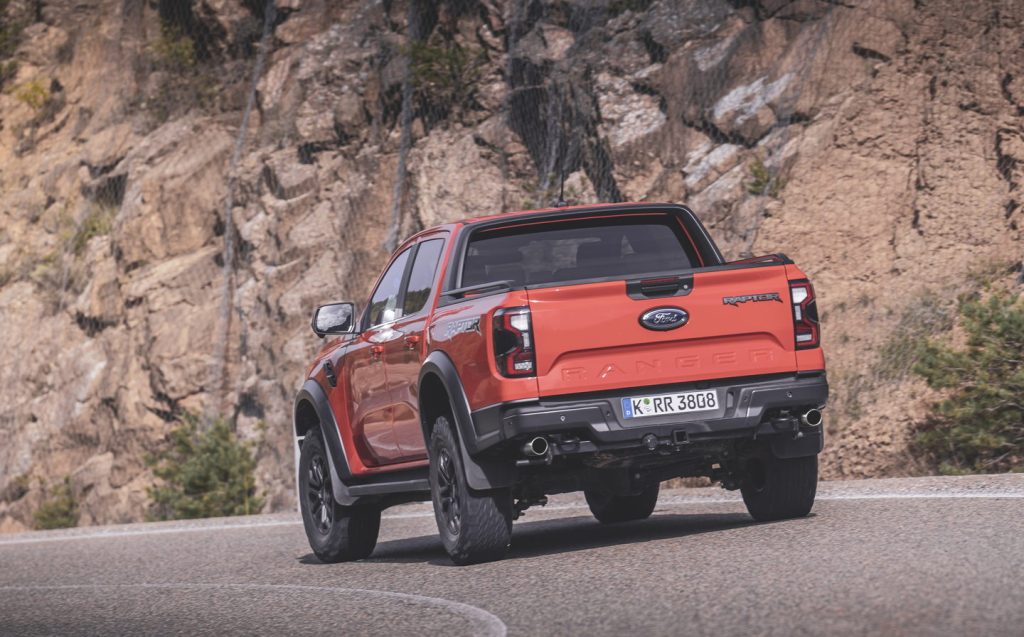
There is a bit of lateral roll when taking corners at higher speeds, though the blocky thread pattern of the all-terrain tyres causes you to reign in your driving enthusiasm on damper surfaces where grip is at a premium.
A variety of different driving setups are selectable from the multifunction steering wheel. These include altering how quiet or loud the exhaust is and the behaviour of the suspension. A multitude of drive modes also alter how the engine and electronics function. The latter become more evident when you get off the road and on more challenging terrain.
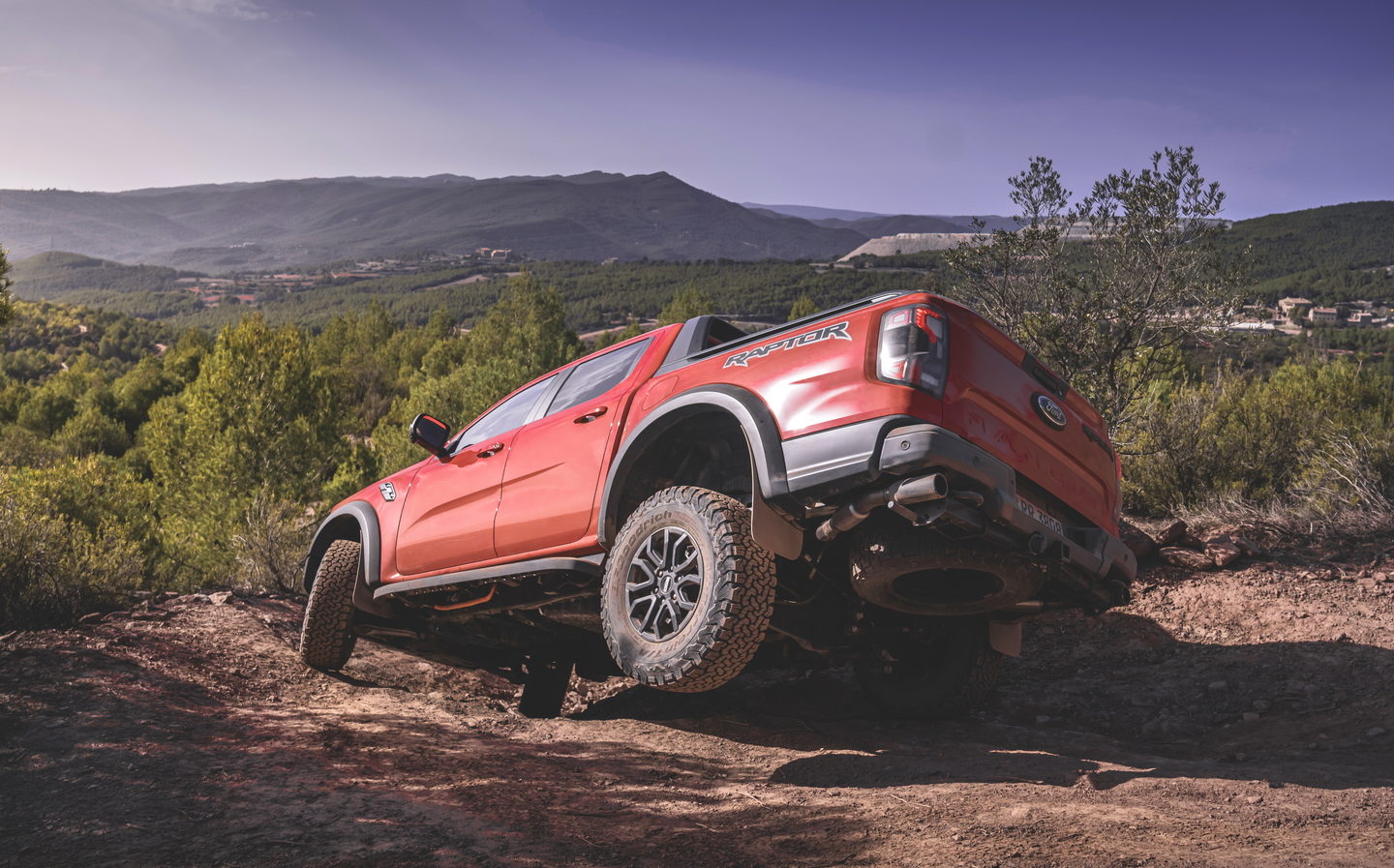
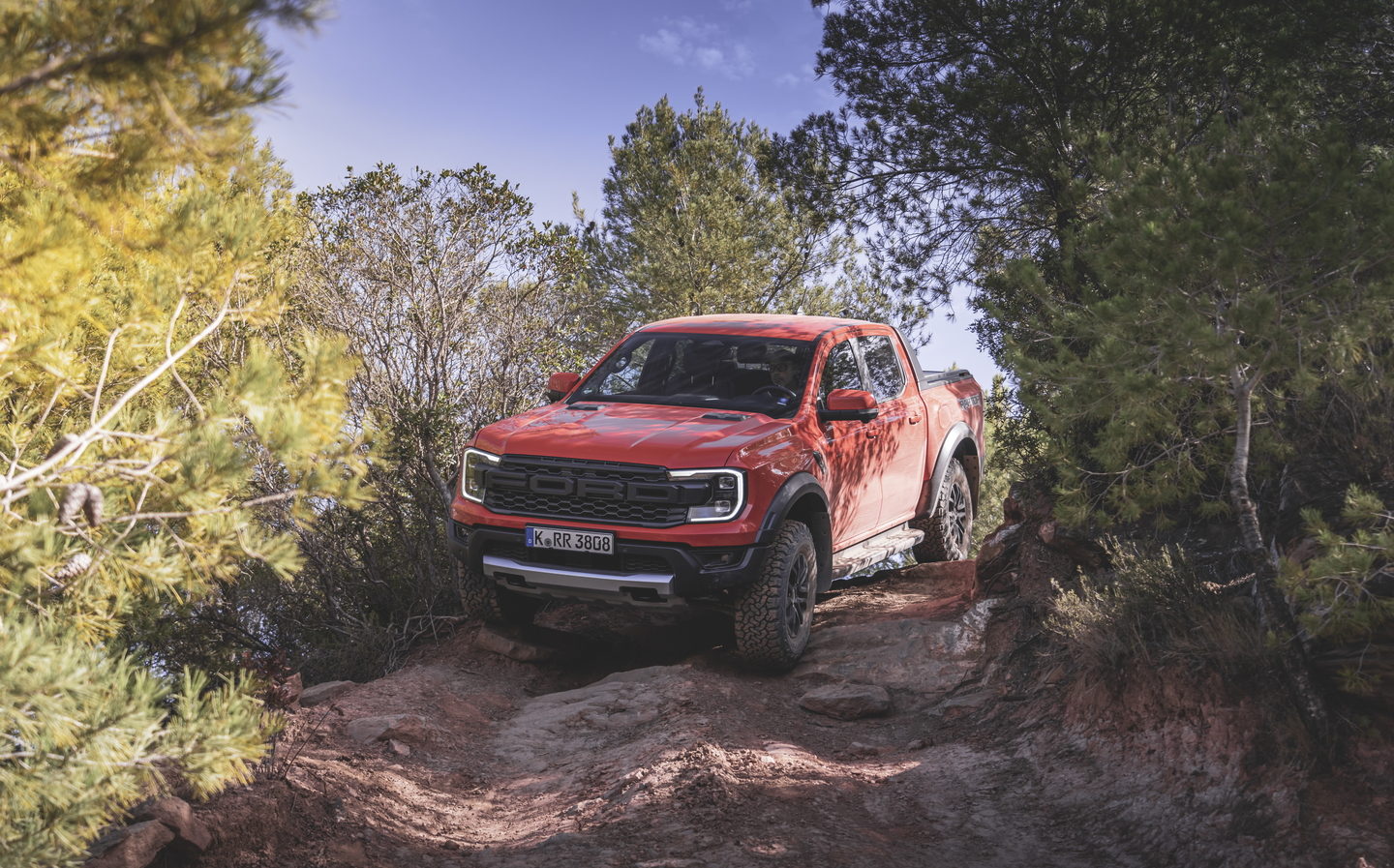
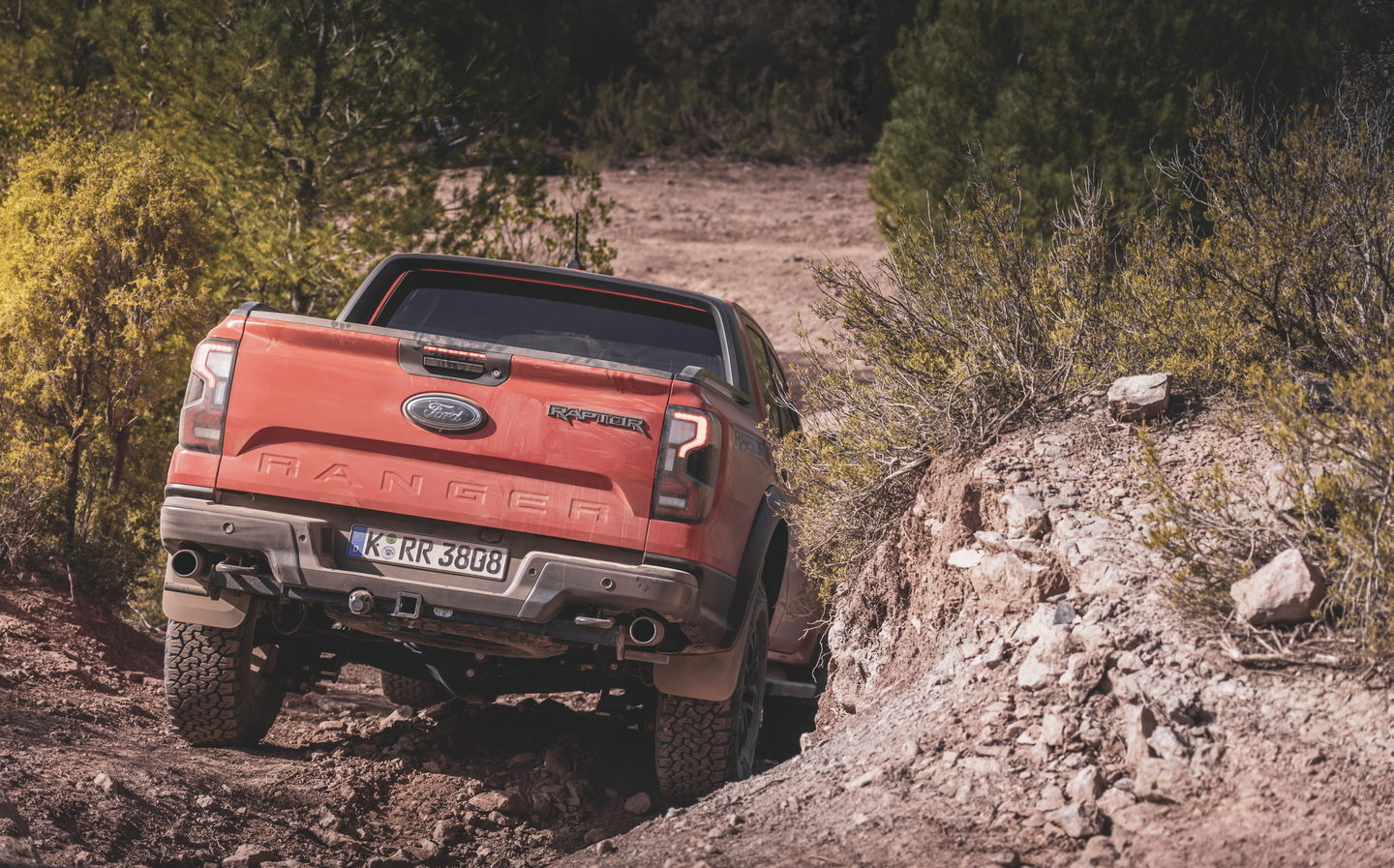
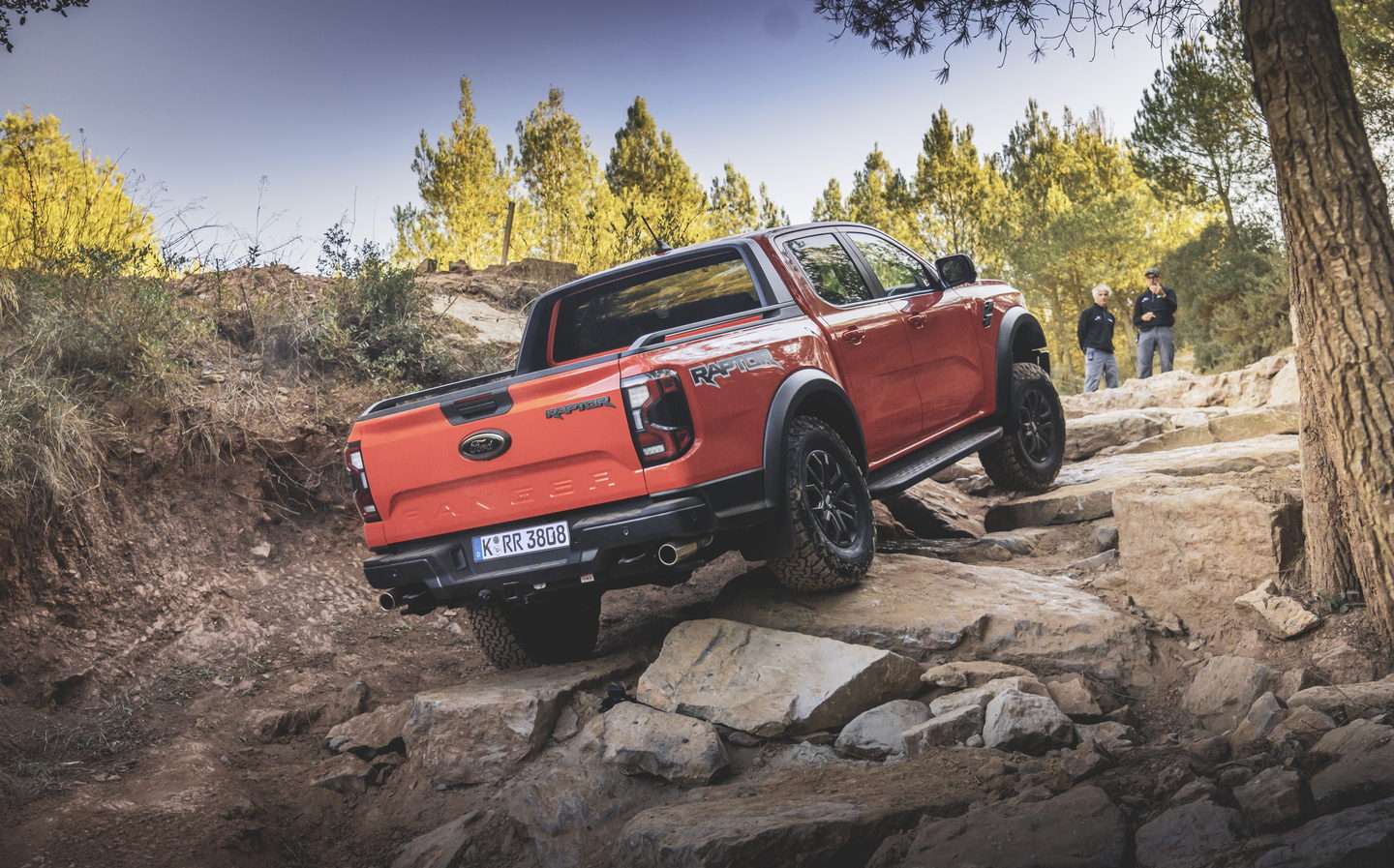
Switching from rear- to four-wheel drive immediately brings more traction and it is easy to lock both front and rear differentials for particularly tricky terrain.
Doing so turns the Ranger Raptor into a motorised mountain goat, allowing it climb rock faces that would prove challenging on foot. You can have the car do as much or as little of the driving as you wish in these situations, but leaving all the assistance technology switched on showcases just how capable it can be.
Pricing and on-sale date
The order books are already open for the Ford Ranger Raptor in the UK, which has a £57,960 starting price. Thankfully you get almost everything for that price, though you will need to pay extra for any colour other than white.
The optional extras include a sticker pack and an accessory pack that features an electric rear tonneau cover.
Verdict: Ford Ranger Raptor review
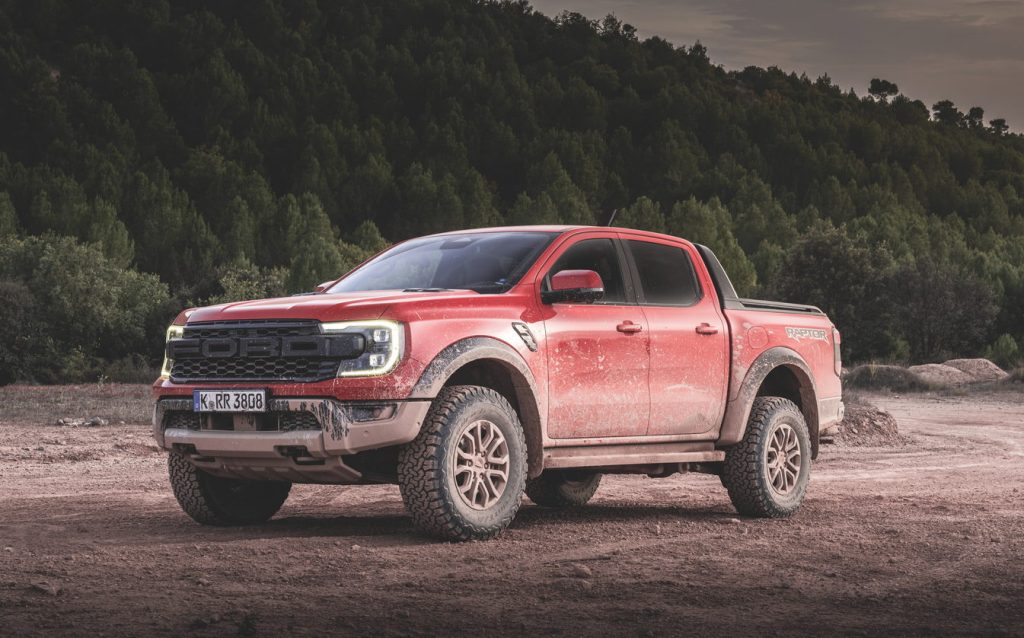
As pick-ups go the Ford Ranger Raptor is the daddy of them all, at least from an outright performance perspective. There are few cars that can truly rival it in terms of looks and in its capability.
If you can live without the throbbing V6 soundtrack (and fuel consumption) then it’s worth waiting for the more efficient diesel engine to come along in 2023, as it will retain the same great chassis and suspension.
Related articles
- After reading this review of the 2023 Ford Ranger Raptor, you might want to read our review of Ford’s electric Transit
- Interested in going electric? Here are the top 10 longest-range electric cars
- Read why Ford sold some of its stake in electric pick-up maker Rivian
Latest articles
- Sci-fi inspired Ferrari 12Cilindri replaces 812 Superfast, powered by 819bhp unassisted V12 engine
- New Renault Symbioz adds to French carmaker’s fresh crossover SUV assault
- Red Bull confirms Adrian Newey’s departure, but where next for the F1 designer?
- Lotus shows off its work on British Cycling’s Paris Olympics bicycle
- New Aston Martin Vanquish to get V12 engine with 824bhp
- Cupra updates Leon and Formentor with sharp styling and longer-range hybrids
- Extended test: 2023 Vauxhall Astra Sports Tourer GS PHEV
- Omoda 5 prototype review: Bargain family SUV is solid first effort for new Chinese brand
- Dacia Duster 2024 review: Rugged, affordable SUV modernised with electrification and quite the glow up


